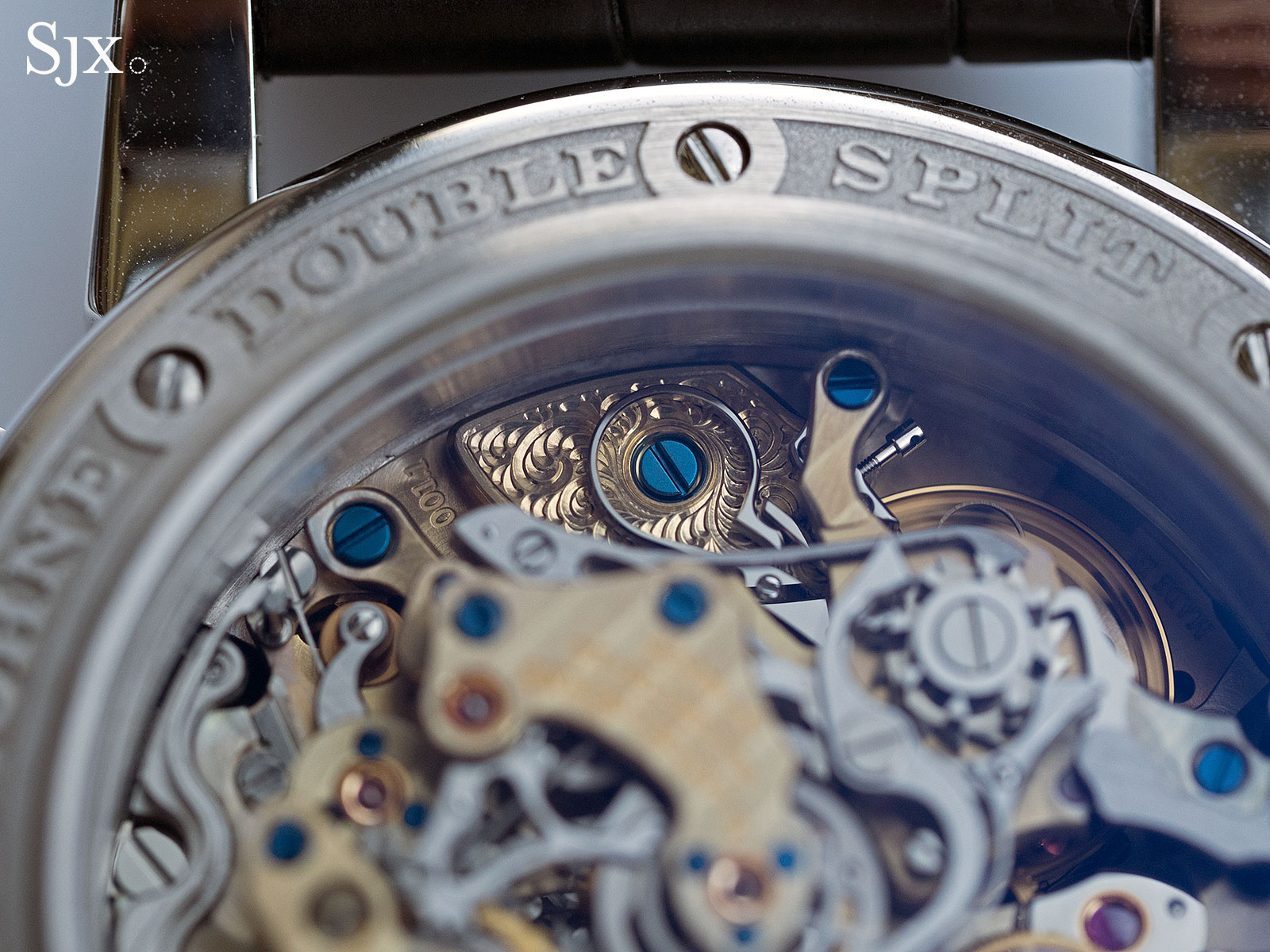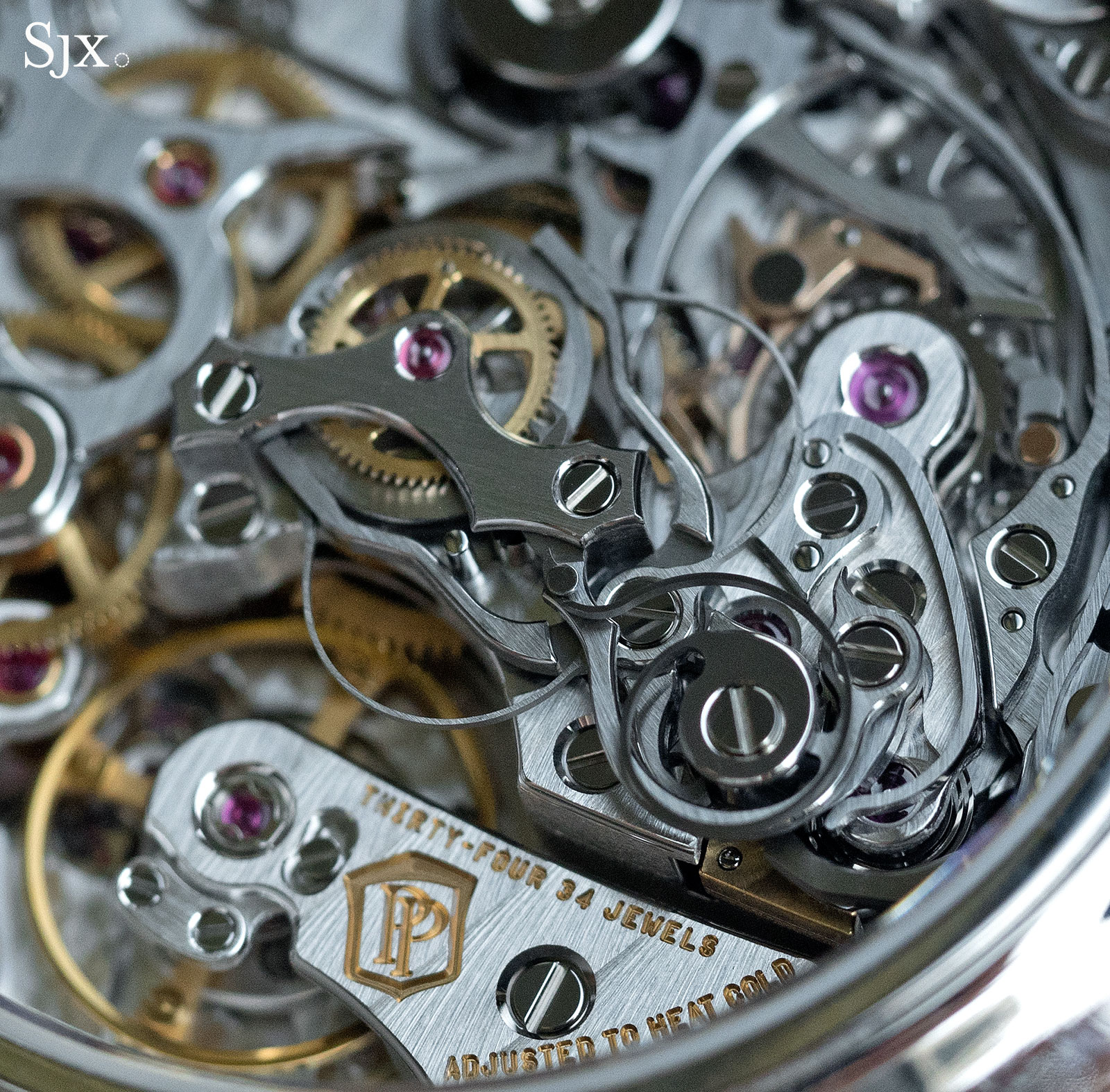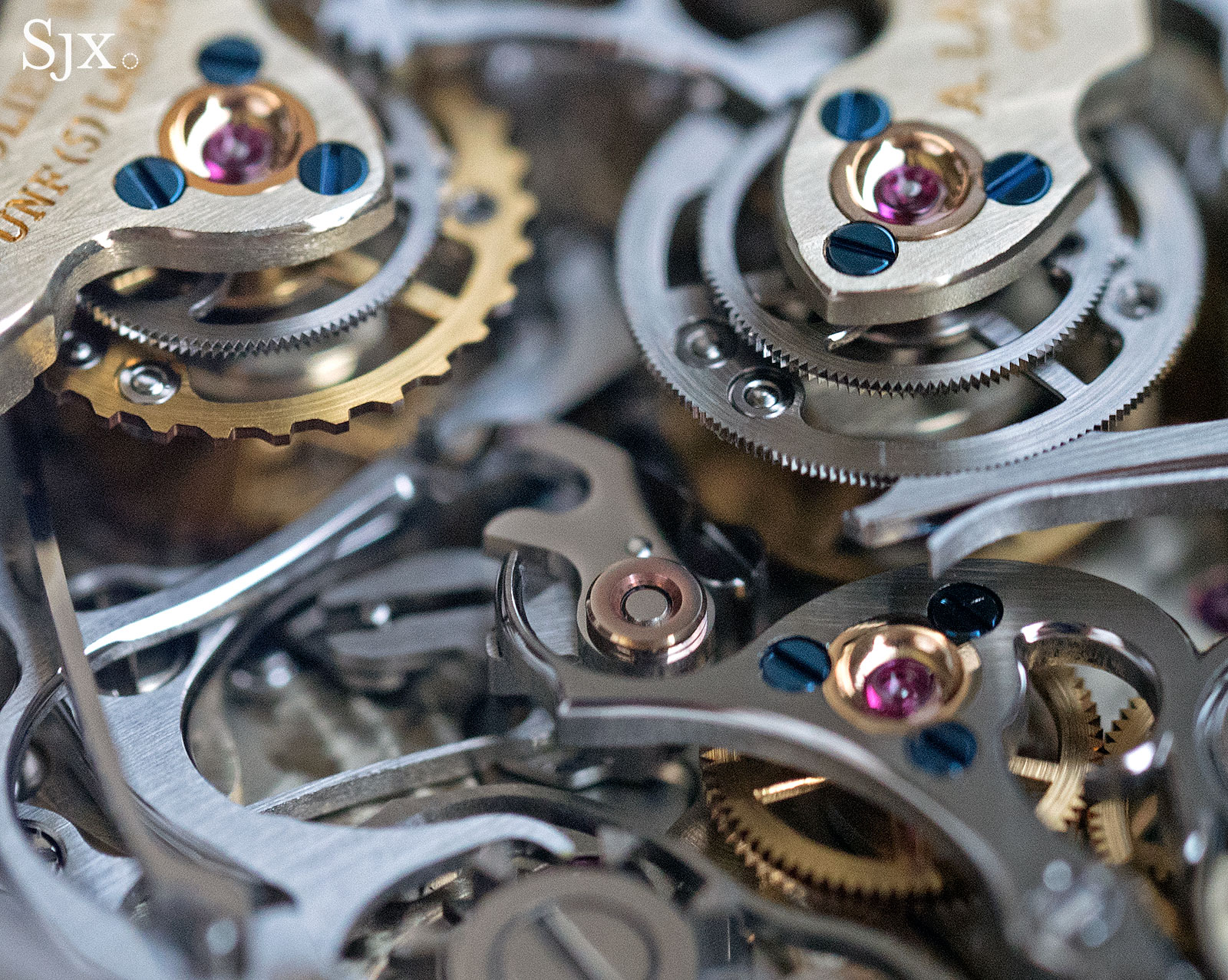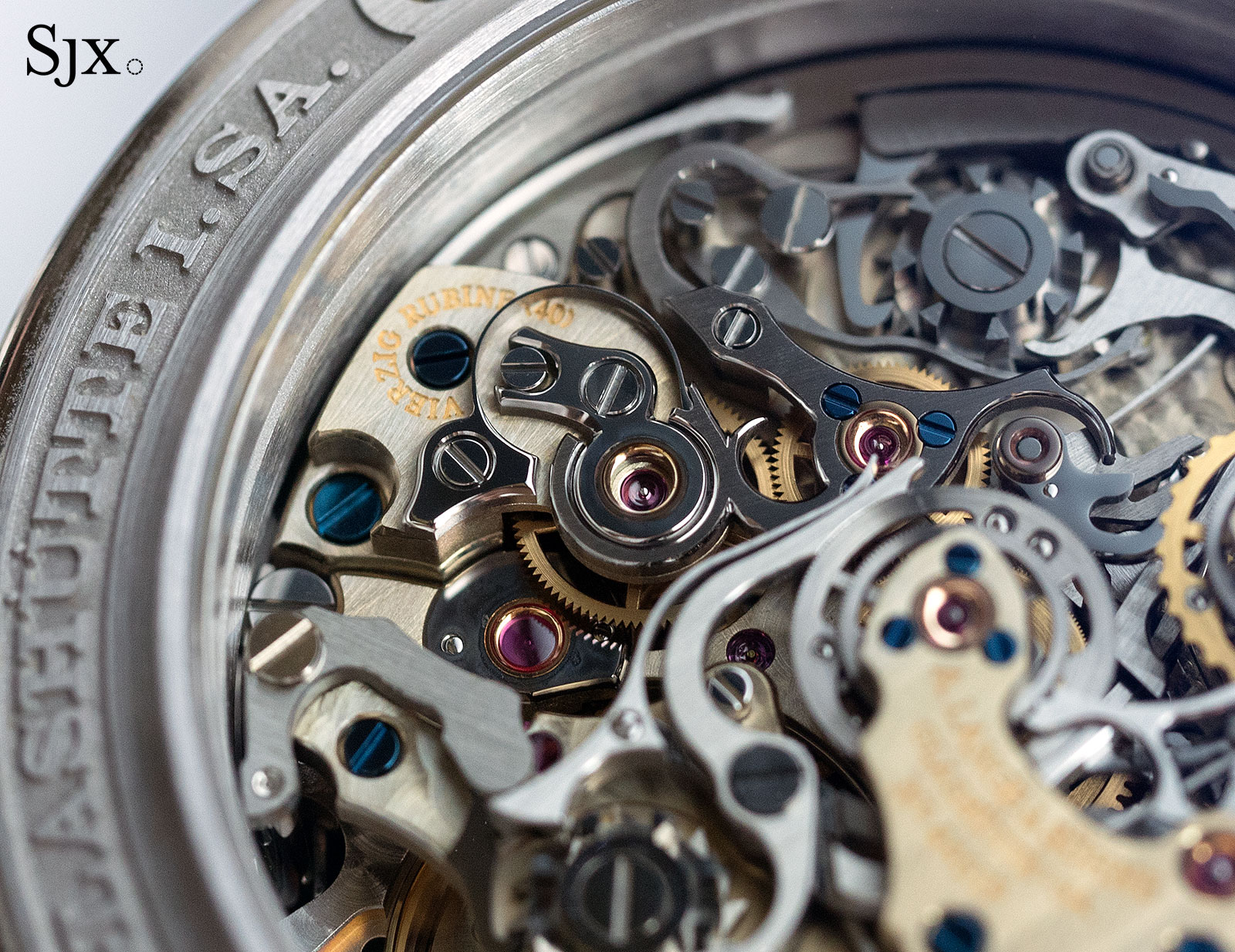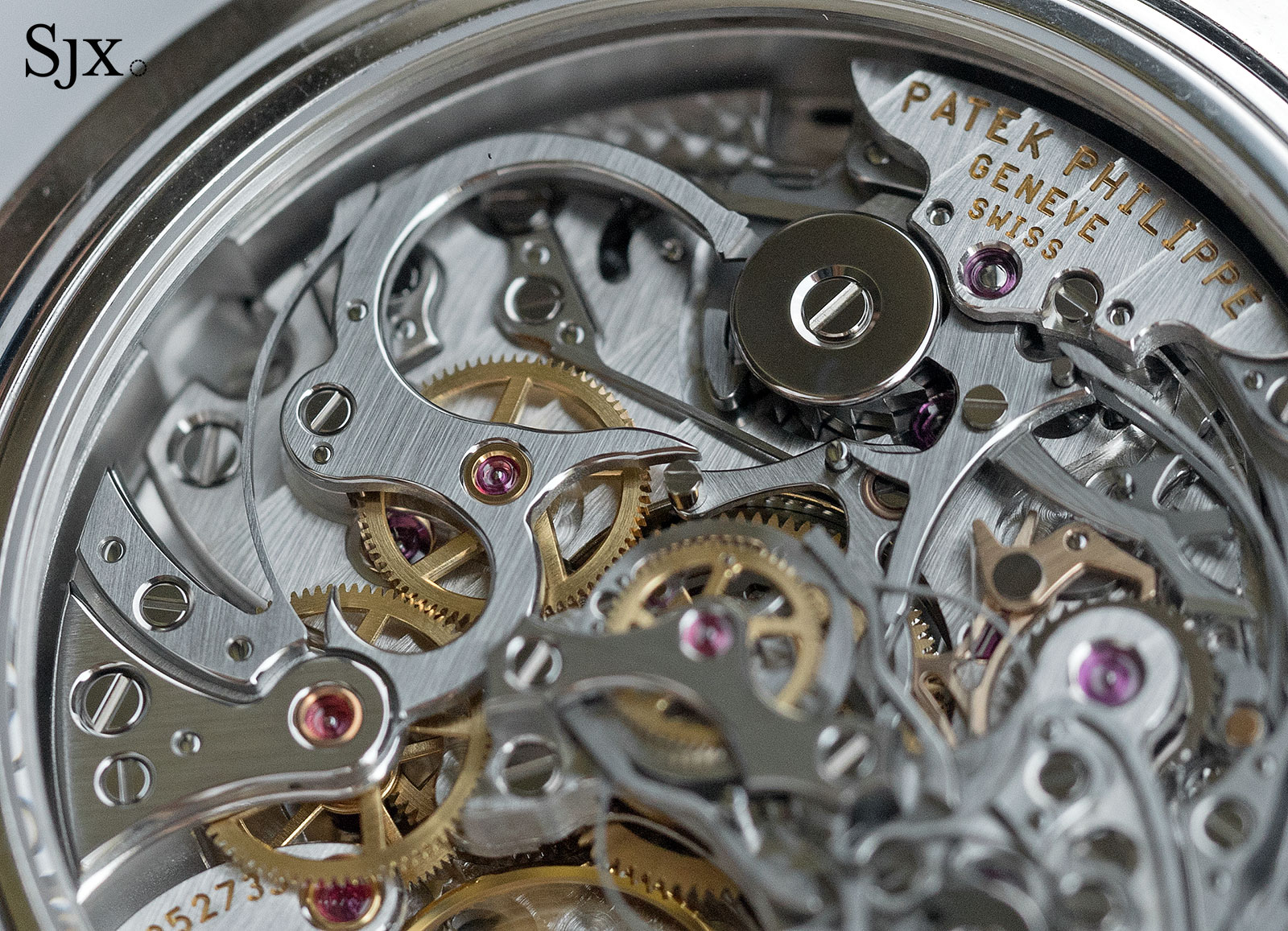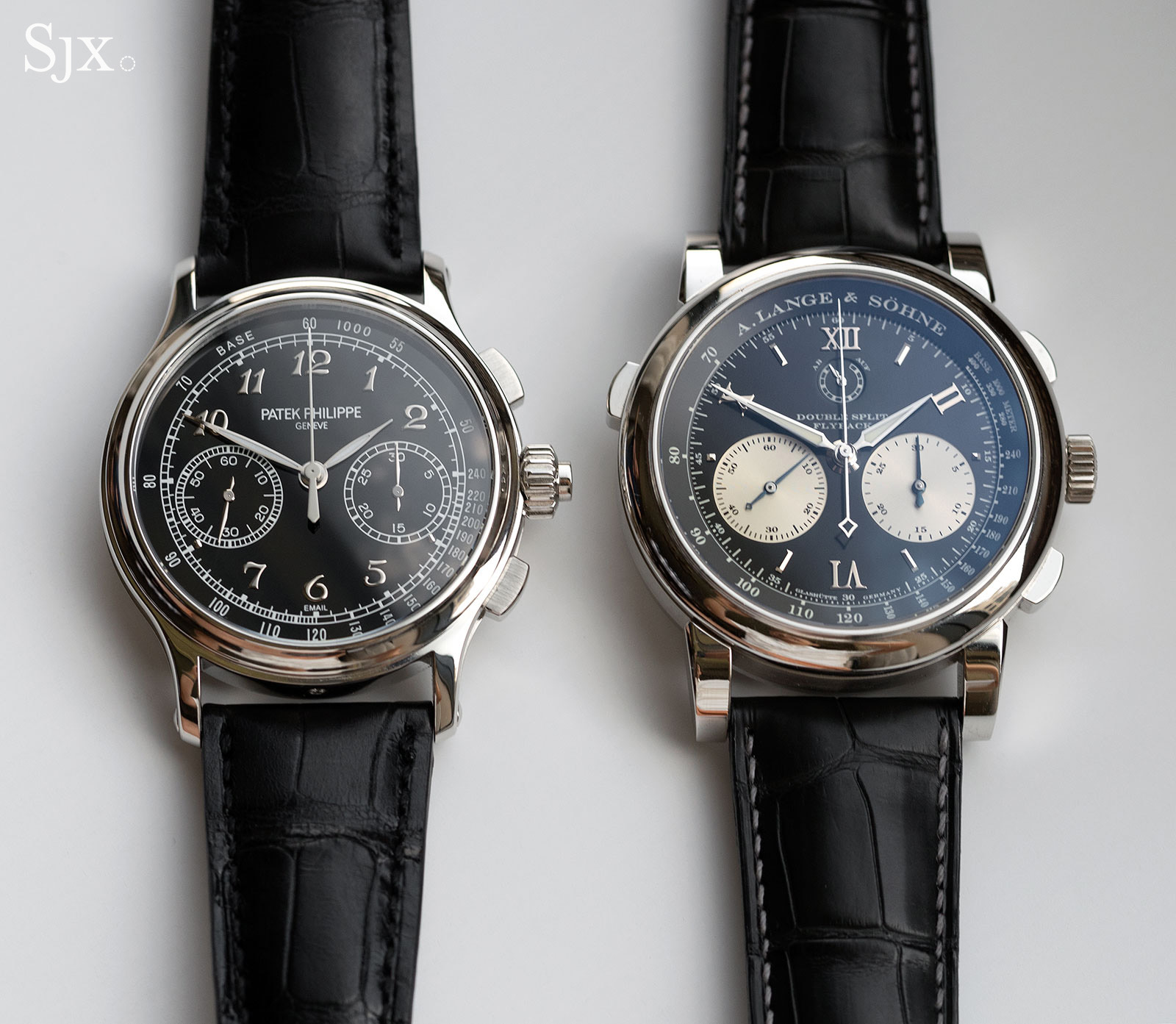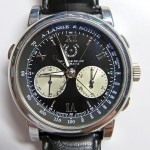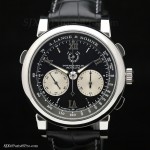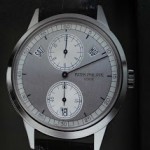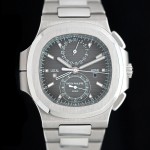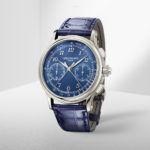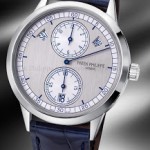Face-Off: A. Lange Söhne Double Split vs. Patek Philippe Ref. 5370P Rattrapante
Comparing two of the best split-seconds chronograph wristwatches.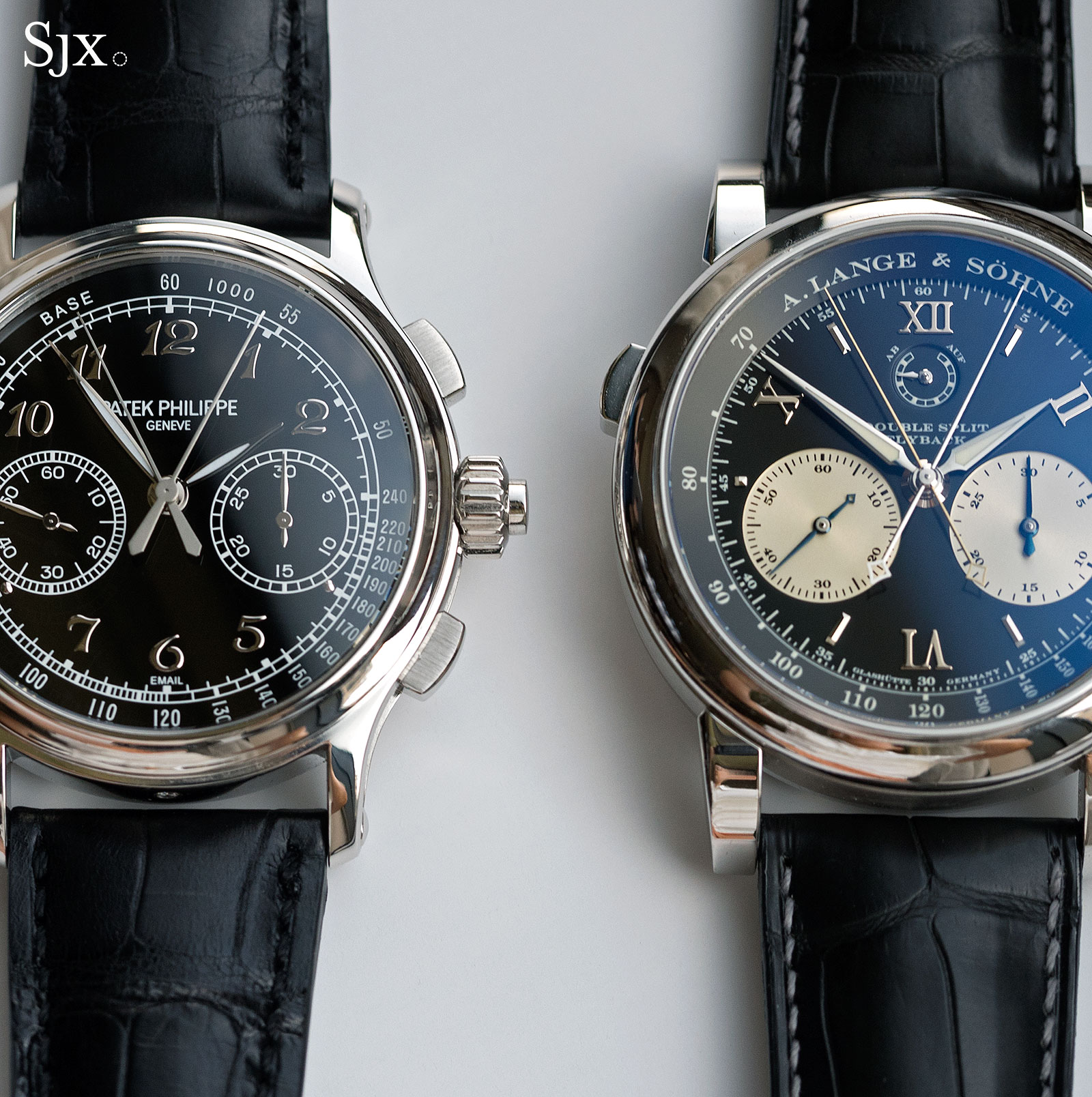
The A. Lange Söhne Double Split and Patek Philippe ref. 5370P are both likely contenders for the most gorgeous split-seconds chronographs in contemporary watchmaking. Traditionally constructed with a sprawling network of levers and wheels for the chronograph mechanism, both offer gorgeous views from the back.
The basics
Patek Philippe only introduced the ref. 5370P last year. Unlike many recent watches from the Geneva watchmaker that lean towards the contemporary in style, the ref. 5370P is heavily reminiscent of vintage Patek Philippe chronographs, making it an easy favourite amongst traditionalists.
Functionally the Patek Philippe is the simpler of the pair, being a pure rattrapante chronograph. It has two co-axial seconds hands in the centre, giving it the ability to measure twin elapsed times of up to a minute. The sub-dial on the left is for the constant seconds, while the right sub-dial can record up to 30 minutes.
The Double Split, on the other hand, can accomplish, well, double. A remarkably impressive watch at the time of its introduction, the Double Split is the older of the two, having been introduced at SIHH 2004. The visual complexity of the movement was a revelation at the time – remember at that time neither Patek Philippe nor Vacheron Constantin had their own in-house chronograph movements – but time has allowed its competitors to catch up with comparable movements.
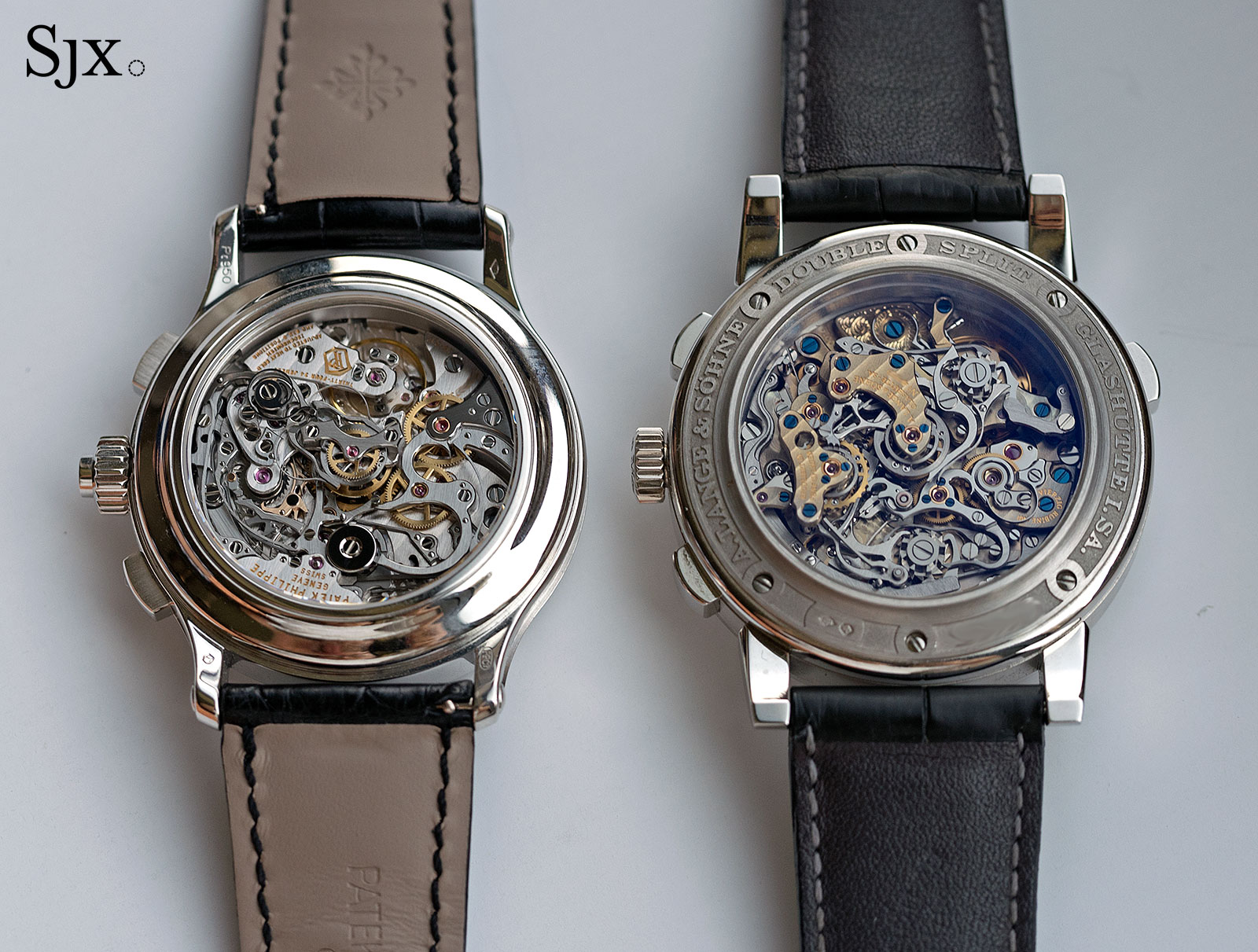
Like the 5370P the Double Split has twin seconds hands in the centre, but also twin minute hands on the four o’clock sub-dial. That means the Double Split can record twin elapsed times of up to 30 minutes, an impressive achievement that has yet to be equalled exactly by another watchmaker. And the Double Split also features a somewhat forgettable power reserve display in a tiny sub-dial at 12 o’clock. Though no longer available in platinum as pictured, the Double Split remains in the line-up in a pink gold case and silver dial.
Despite the identical functions, both are strikingly different watches, with varying strengths and weaknesses.
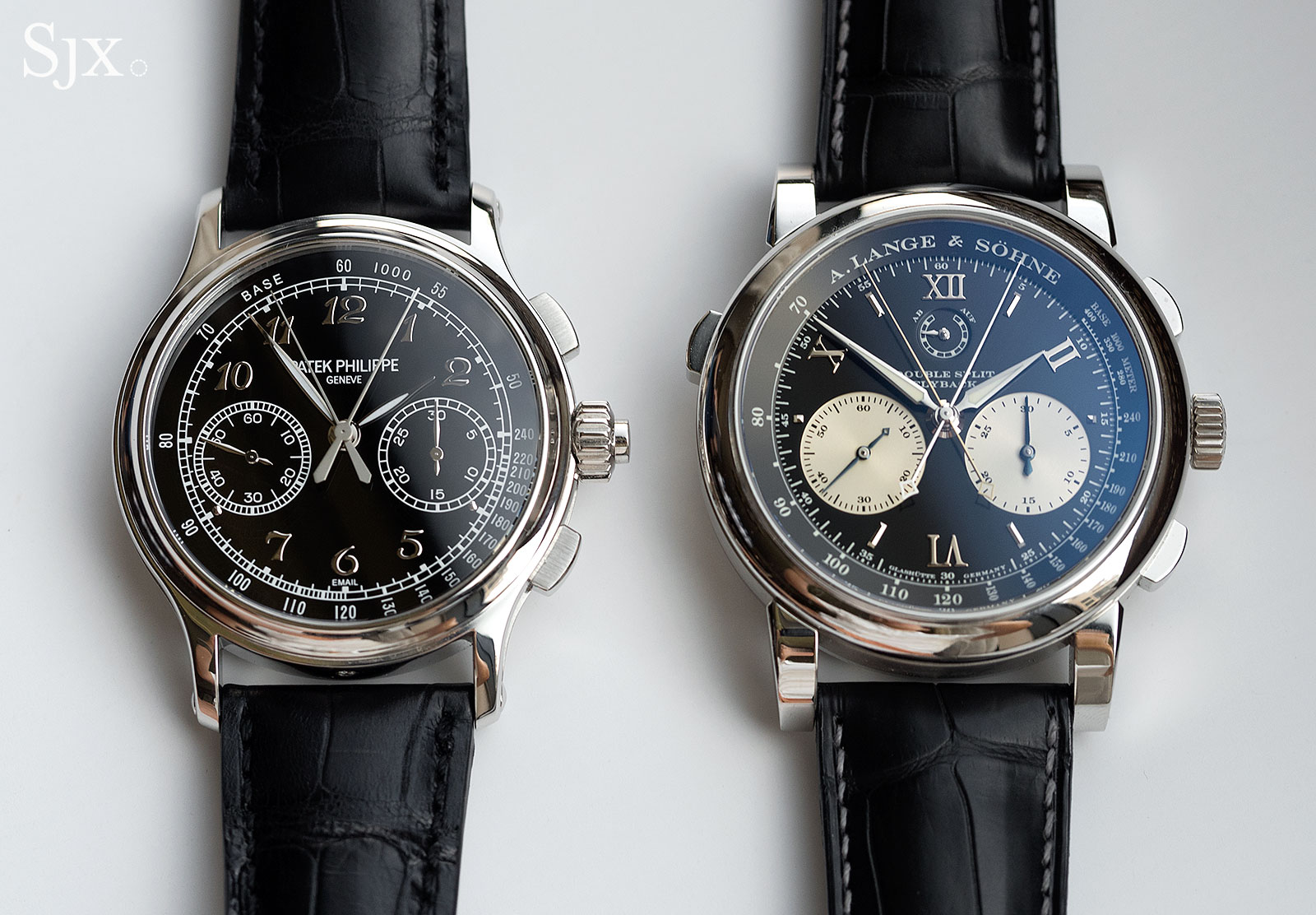
Tactile feel – the watch case
The pair have varying case decoration and styles, but they are equals in terms of fit and finish. Where they differ is apparent size.
Weighing 220g in platinum, or about half a pound, the Double Split is the larger of the two, and it shows, by a noticeable margin. It’s not just physically larger, but the design elements of the Double Split case add to its perceived size.
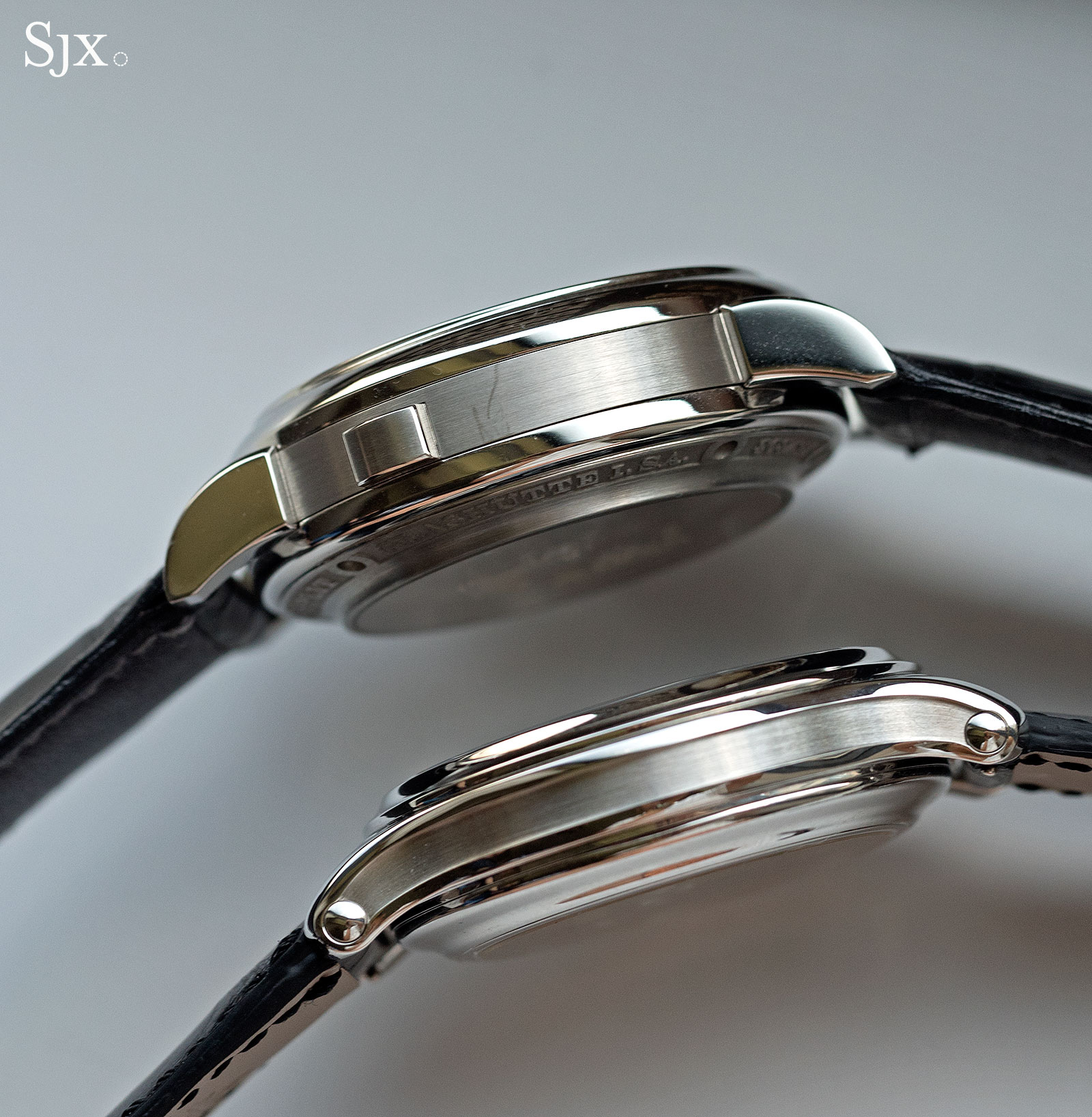
Double Split at top, ref. 5370P at bottom
At just over 43mm in diameter and 15.3mm high, the Double Split is a physically large and has a high centre of gravity, giving it a top-heavy feel on the wrist. The feeling of size is magnified by the thick lugs, concave bezel, protruding case back, as well as the flat, vertical case flanks.
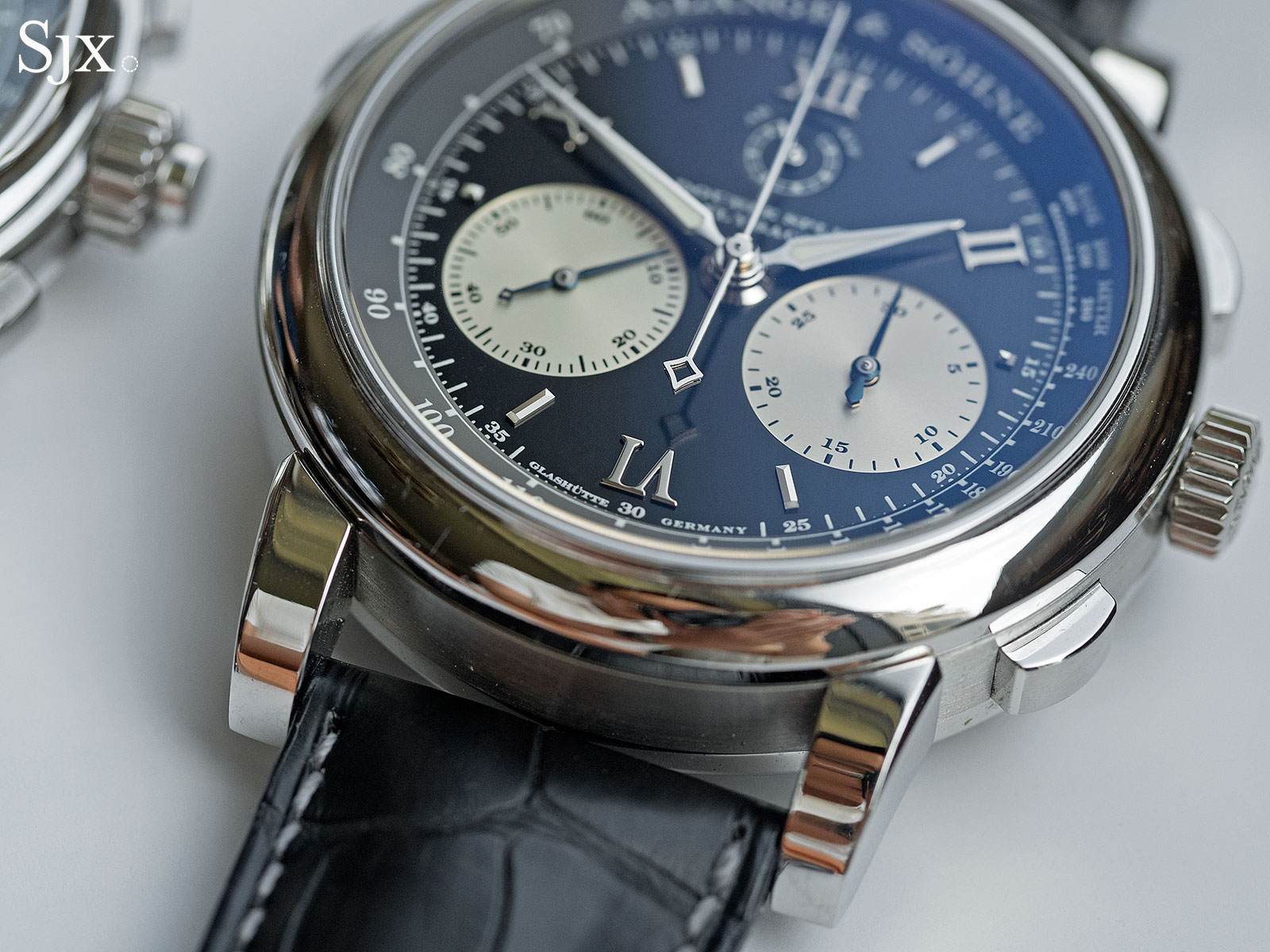
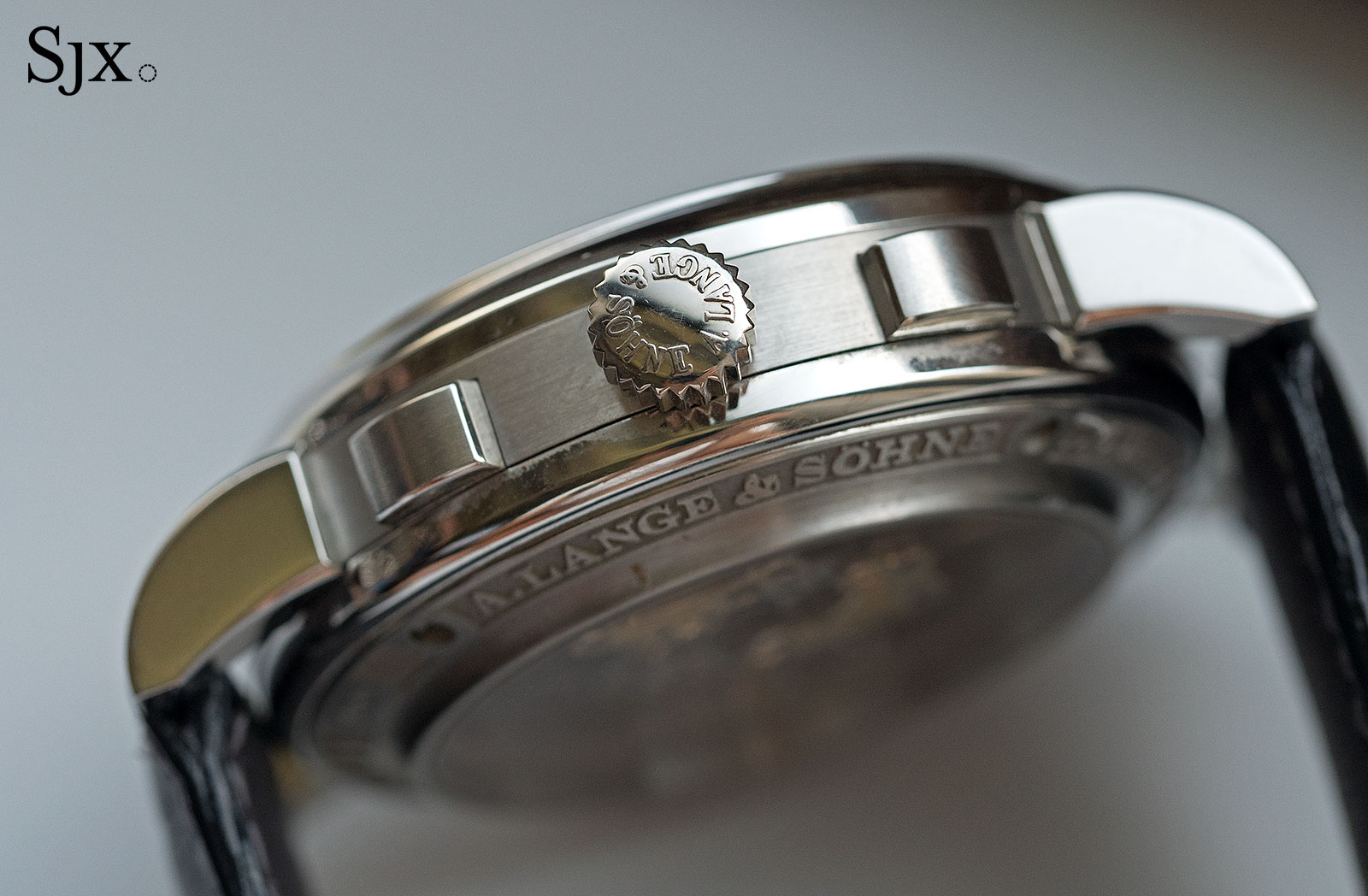
In contrast, the 5370P is more compact, being truer to traditional Patek Philippe styling – discounting the recent monuments like the Grandmaster Chime – that emphasises slimness and elegant forms.
In fact, the proportions of the case have an intriguing historical antecedent: the slim lugs are set relatively far apart relative to the size of the case, bringing to mind mid 20th century Patek Philippe chronographs like the landmark ref. 1518. These proportions are absent on the brand’s other modern day chronographs, but help the 5370P feel smaller.
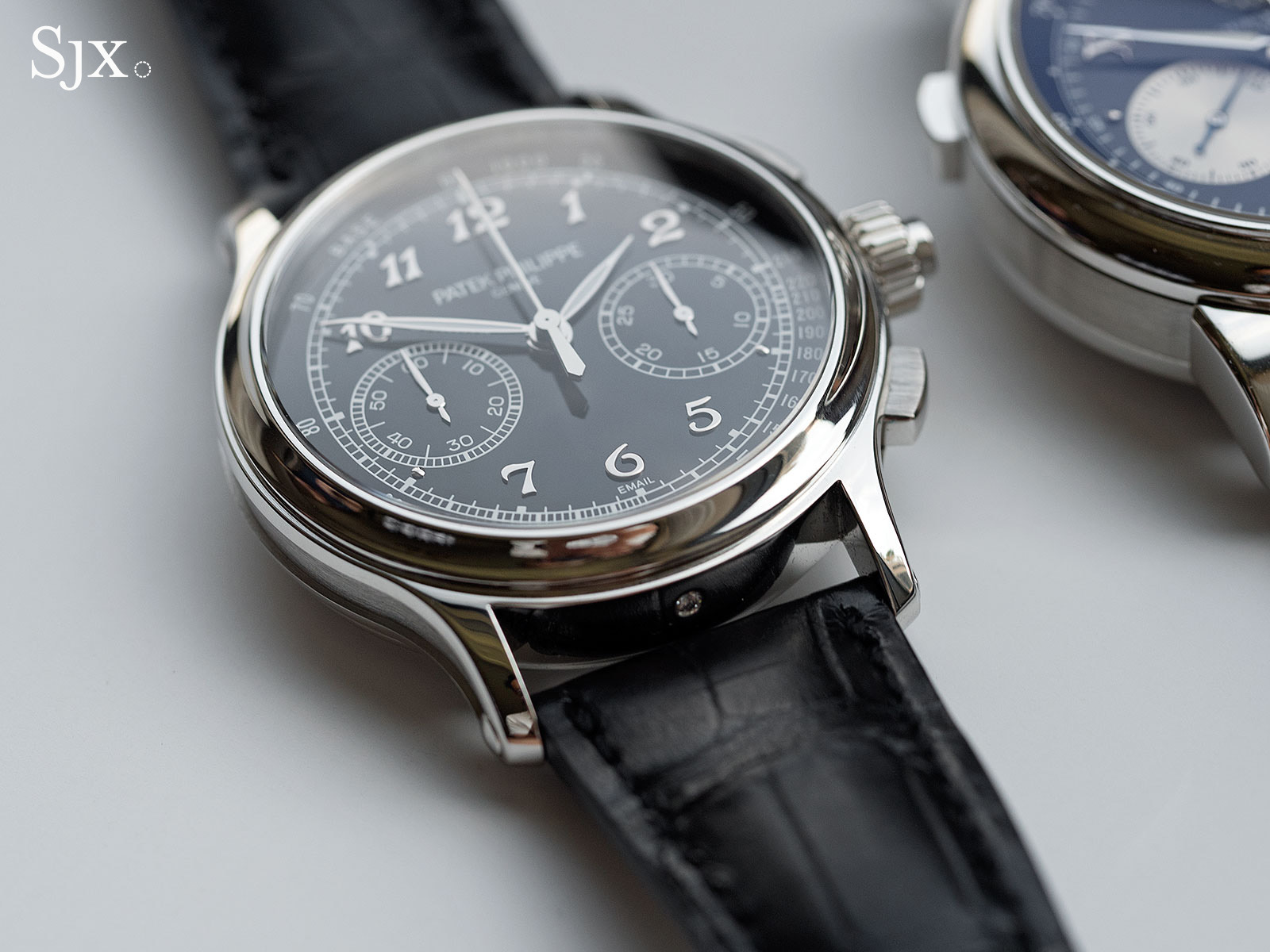
Still a large watch at 41mm in diameter and just over 13.5mm high, the 5370P nonetheless feels less bulky than the Double Split, thanks in part to the narrow, concave bezel. The recessed case sides, which are brushed and highlighted by a raised, polished perimeter, also reduce the impression of height.
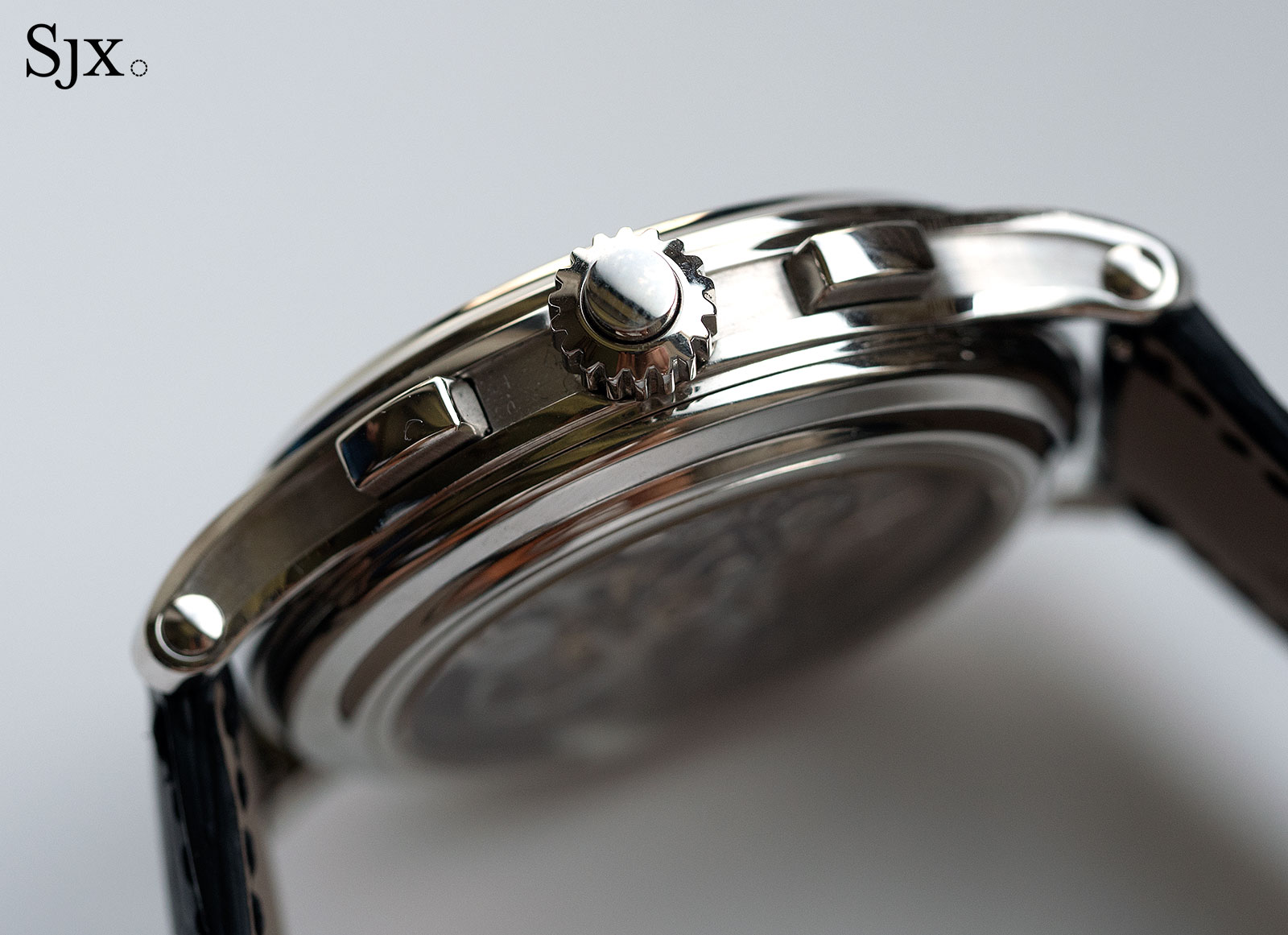

Being platinum, the Patek Philippe is still a hefty watch on the wrist. It has presence – you can feel it – but is reassuringly solid rather than cumbersome. The Double Split verges on being too large, having a similar feel to a solid gold Royal Oak Offshore (which is probably the leader in the massive watch league table).
Form follows function – the dial
The pair unsurprisingly have similar dial layouts. In terms of materials, however, they are strikingly different.
The dial of the 5370P is obviously more elaborately constructed, being a disc of 18k gold that’s covered in vitreous enamel. Usually labelled grand feu enamel, vitreous enamel is powdered glass that is melted in an oven, creating a hard, smooth and glossy surface.
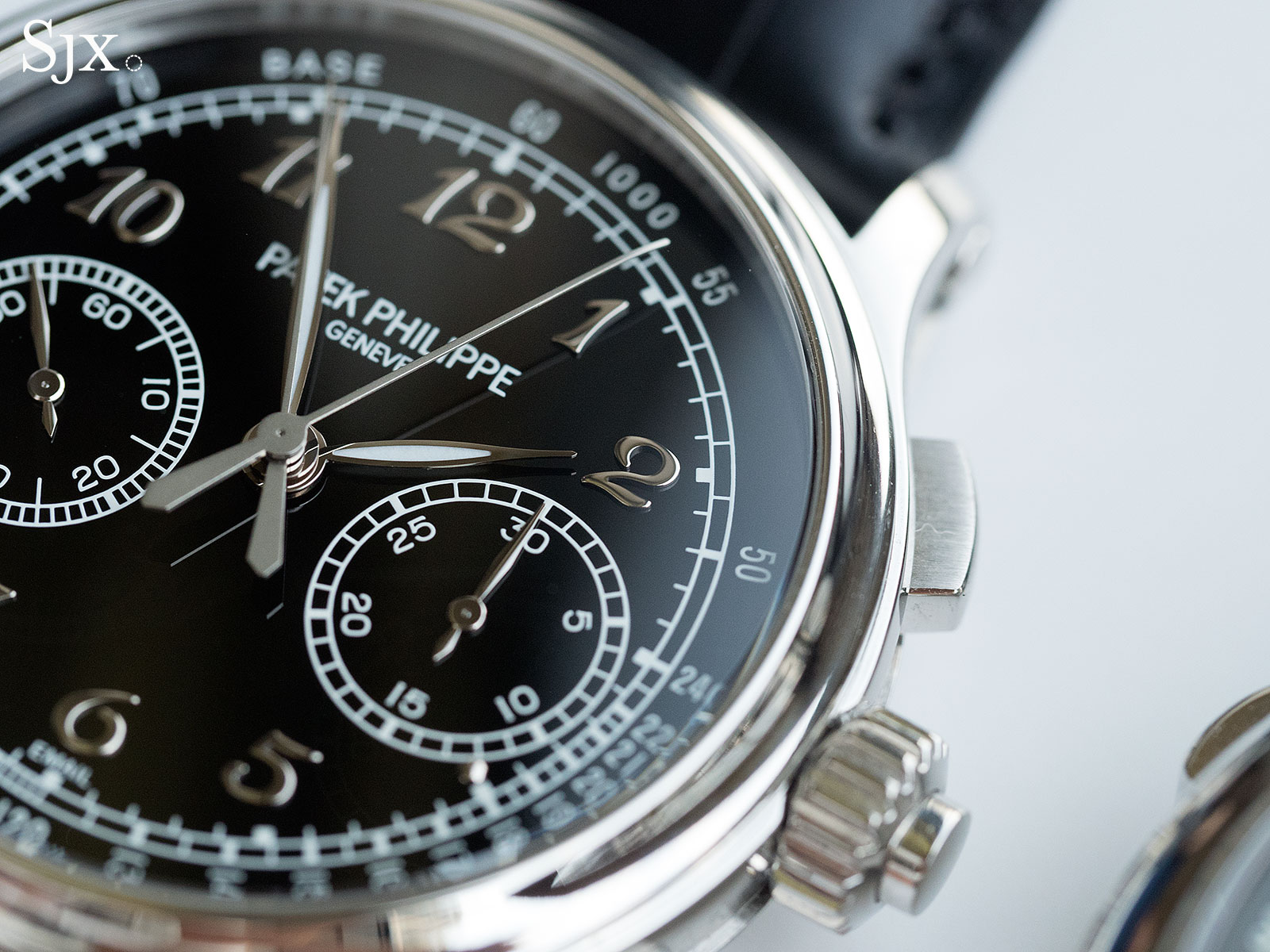
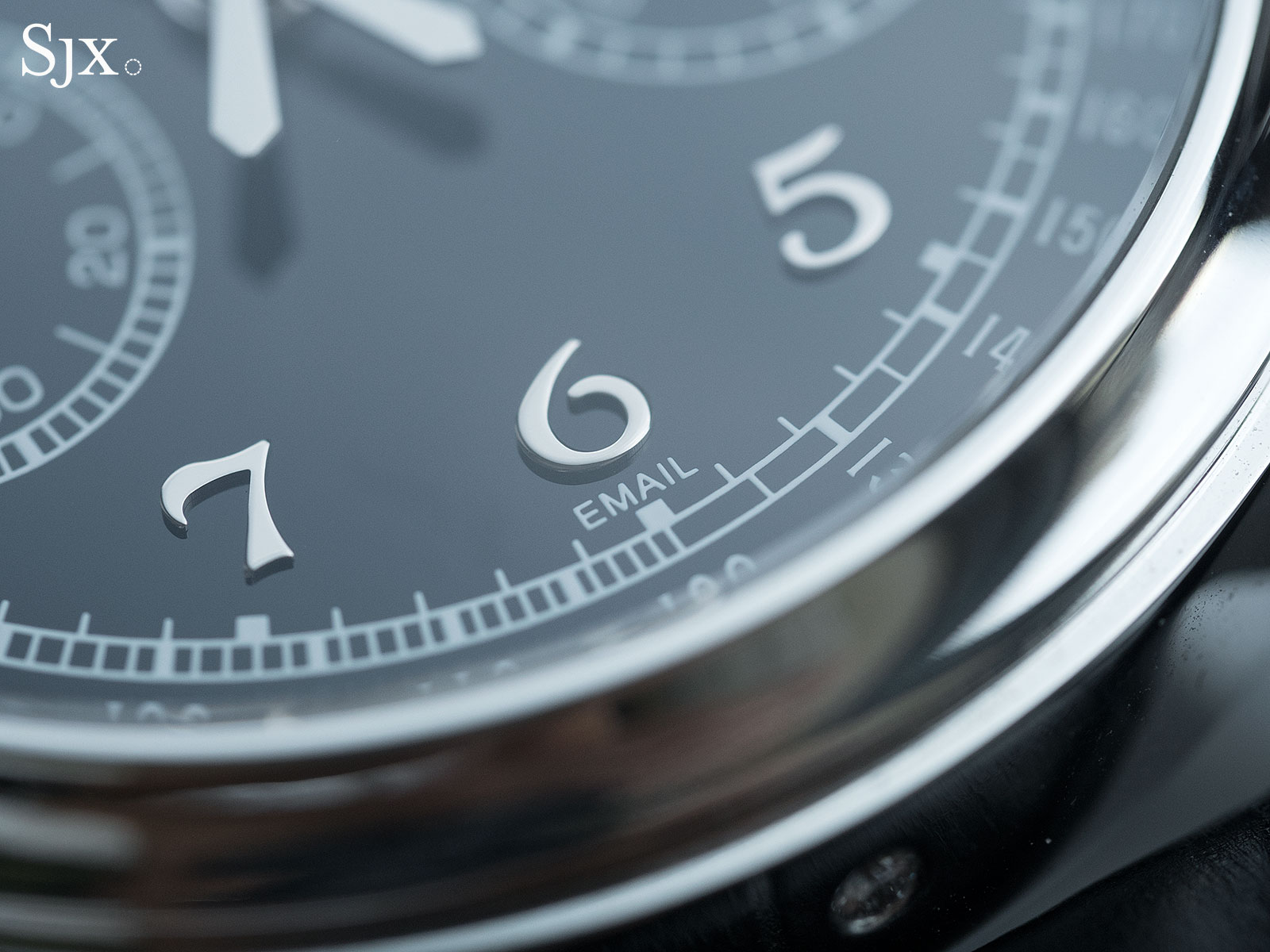
Email is French for “enamel”
Enamel dials are typically produced by hand, with high rejection rates due to the frequent imperfections like bubbles or warping, but are visually compelling, possessed of a depth and vibrance of colour unmatched by lacquer or galvanic dial finishes. The enamel dial is complemented by applied Breguet numerals made of 18k white gold, which add to the expensive, refined appearance.

Where the 5370P falls short is with its hands. To start with the hour and minute hands are filled with luminescent Super-Luminova that aids nighttime legibility, but the dial has no Super-Luminova markings. Functionally that’s a moot point, but for an picky person it’s incongruous.
The other weakness are the twin seconds hands in the centre, which confusingly are the same colour; split-seconds chronographs typically have contrast colour seconds hands to make reading easy. Exactly the same as the hands found on other Patek Philippe chronographs with the same base movement (like the ref. 5270 for instance), the hands are flat, with rounded edges and a smooth, matte finish (tumble polished perhaps?) that feels less elaborate than they should be.
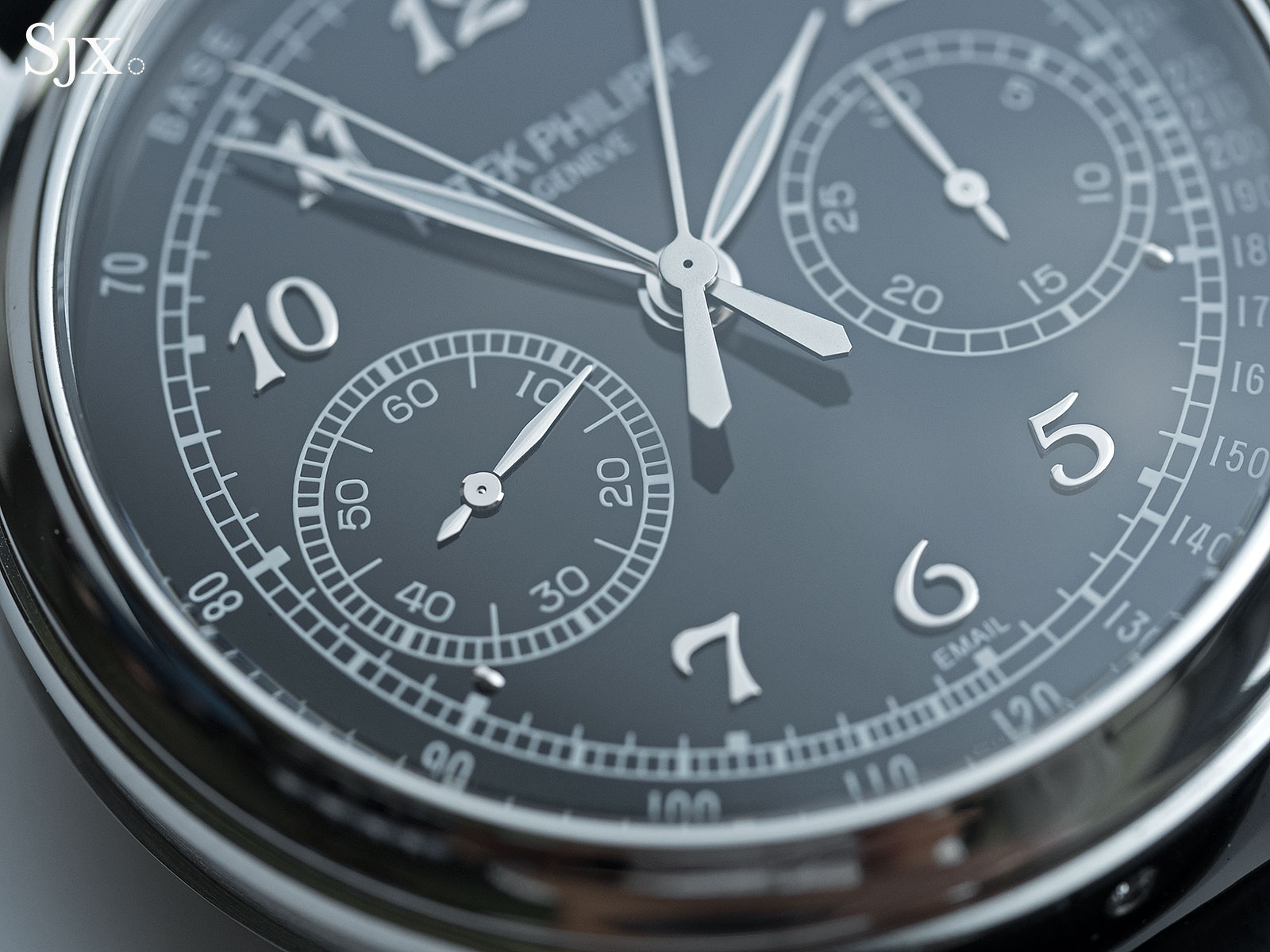
The Double Split dial is finished identically to the vast majority of Lange dials, meaning it’s a disc of solid silver that’s galvanically treated to create its colours. While it is finely made – the applied markers are solid gold – this dial doesn’t feel quite as fancy as that on the Patek Philippe.
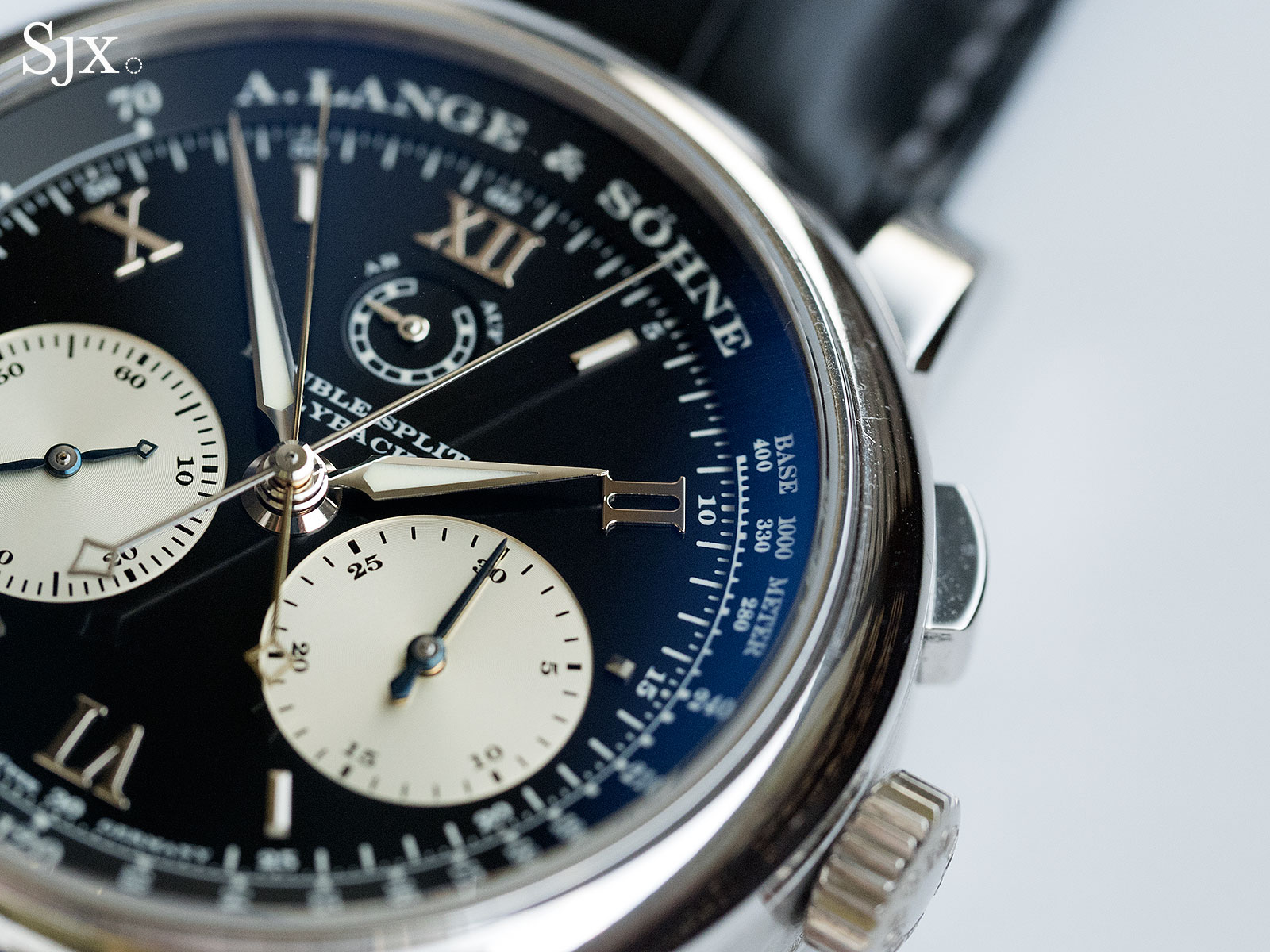
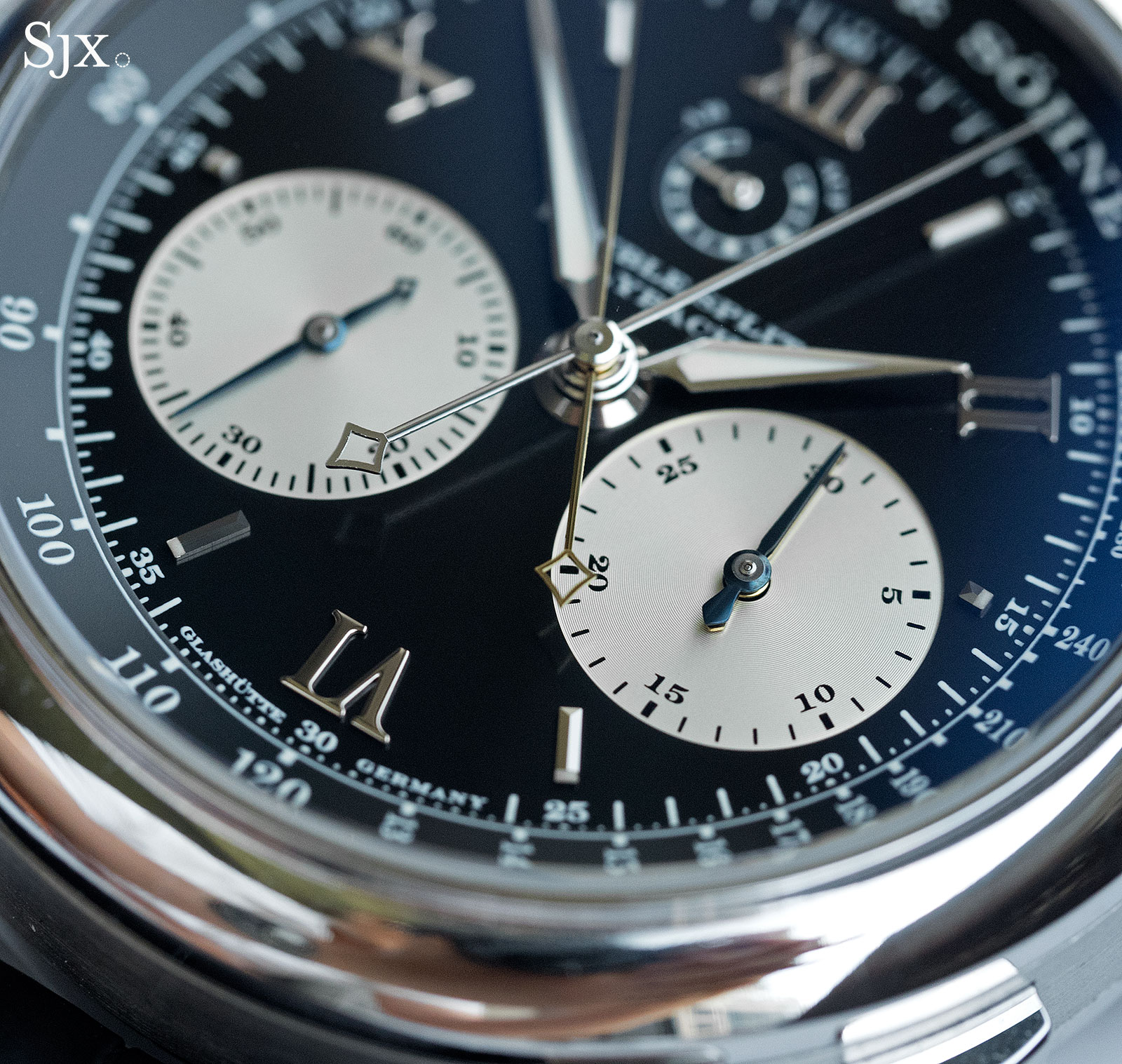
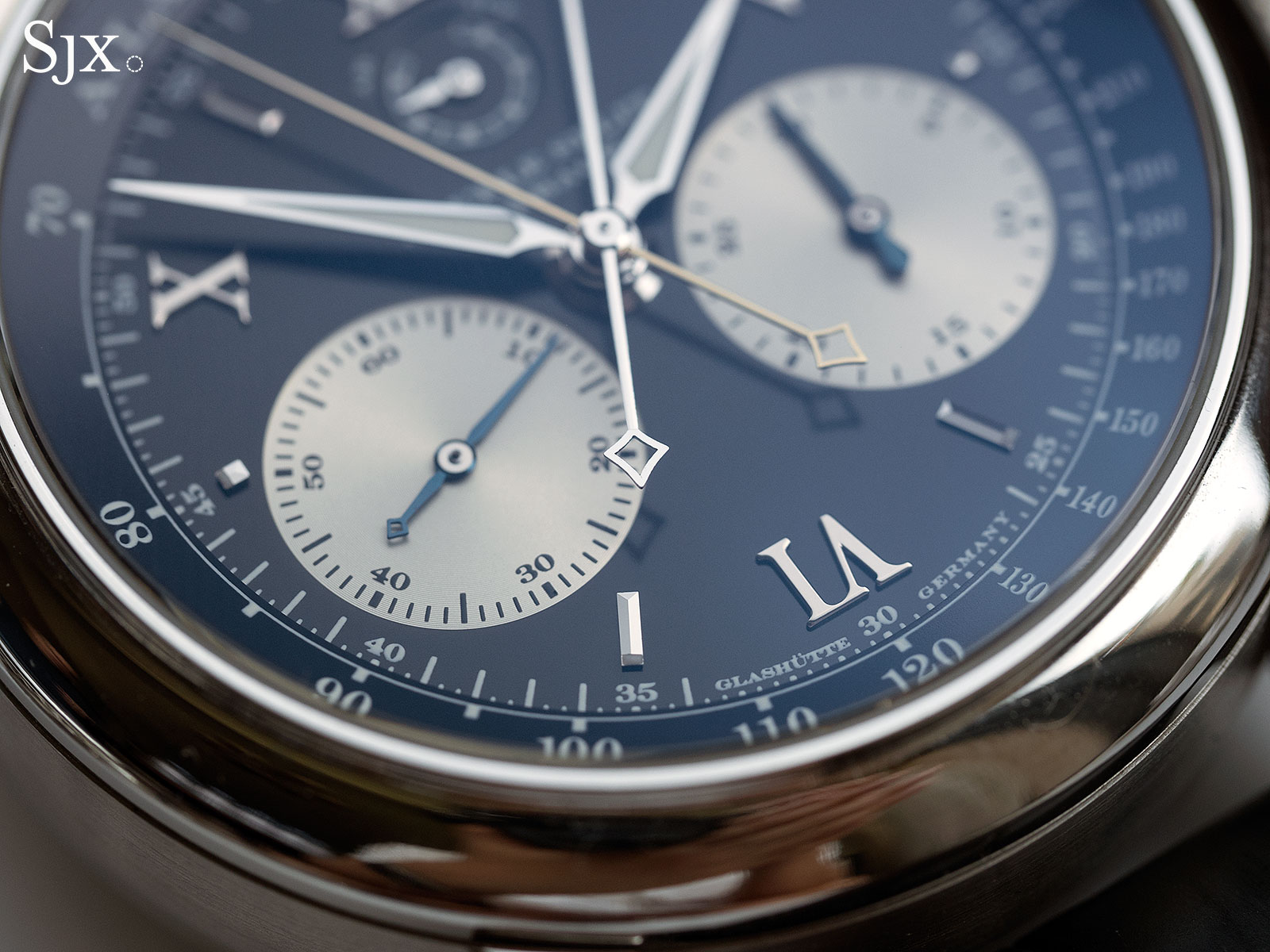
That being said, the hands on the Double Split, and there are a great many of them, are beautifully crafted. Take the pair of contrast coloured seconds hands for instance. They have rounded points and tails, while the centres have bevelled edges. A similar finish can be seen on the twin minute hands in the sub-dial at four o’clock, as well as the constant seconds hands. This implies that there is some degree of hand polishing on the hands (no pun intended), since hands fresh out of a stamping machine look flat.
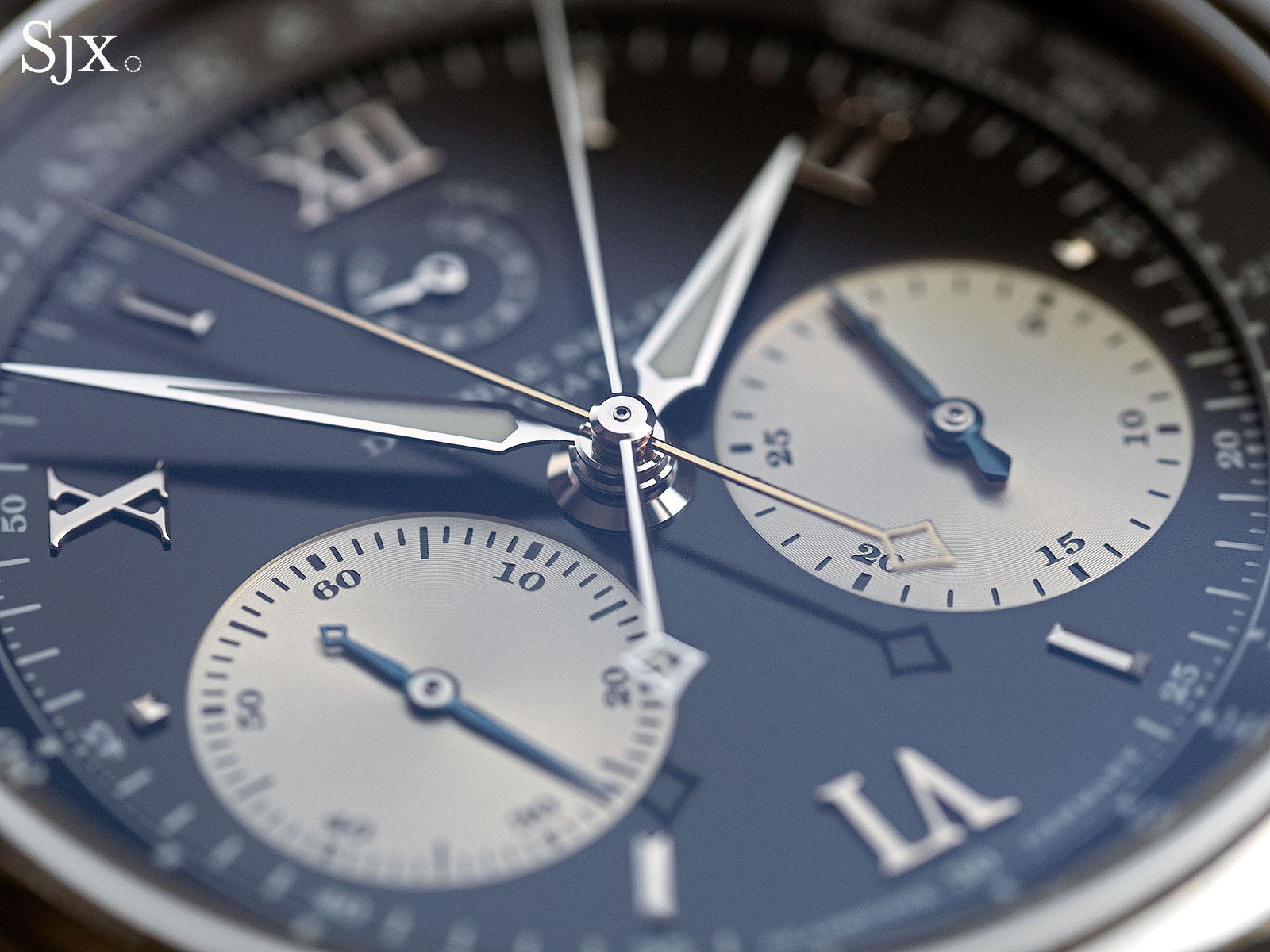
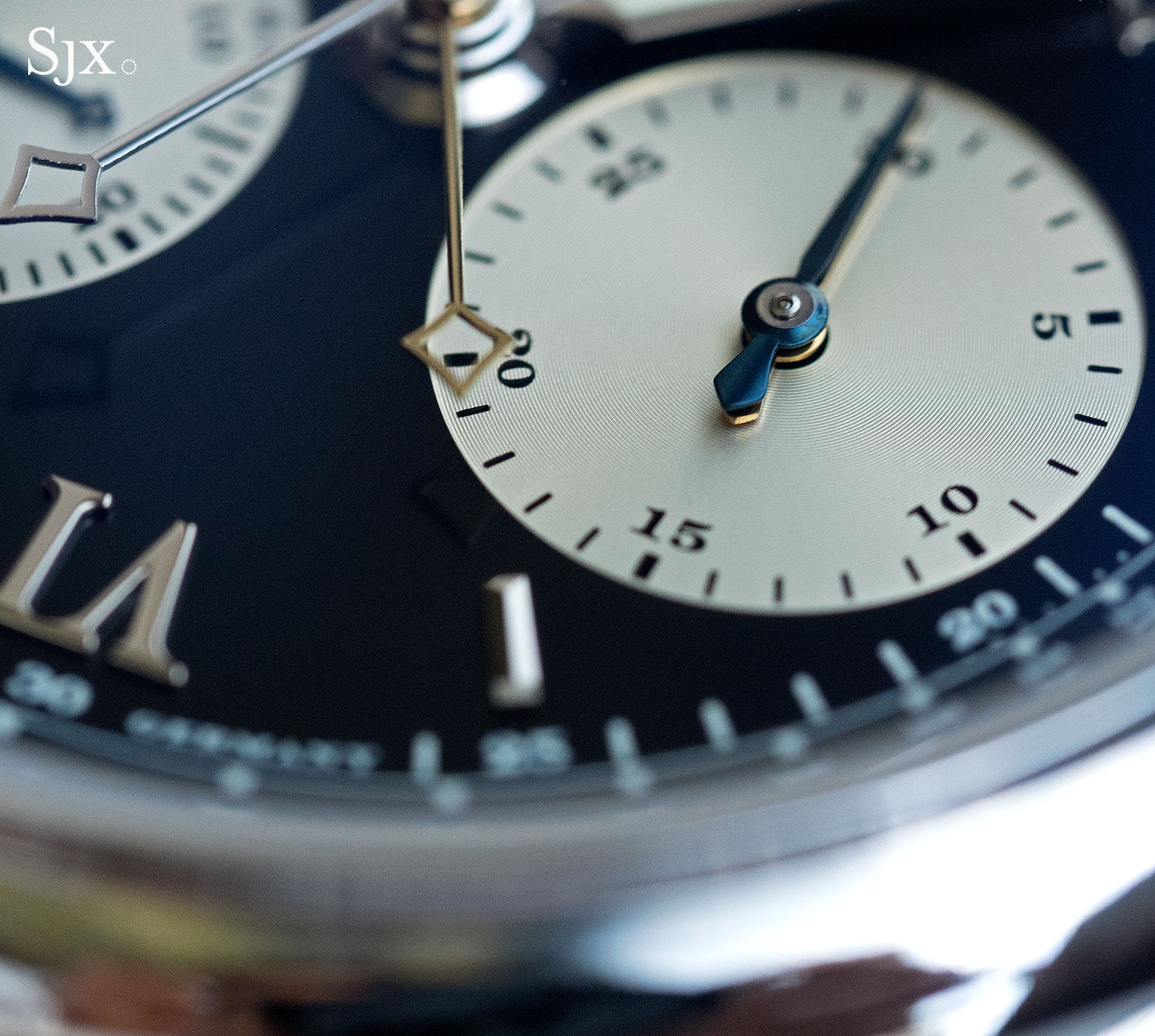
Where it really counts – the movement
The calibre L001.1 inside the Double Split has more functions and is correspondingly more complex, but the CHR 29-535 PS in the Patek Philippe has a slight edge in terms of technology, including patented, optimised teeth profiles for the chronograph wheels that improve their efficiency and reduce play.
Given that the Patek Philippe came more than a decade after the Lange, the German contender can’t be faulted. In any case, any technology advantages of the Patek Philippe turn into negligible performance differences on the wrist (which is the case for much of high-end watchmaking anyway). The point of either of these watches is not technology, but the visuals of the mechanics inside.
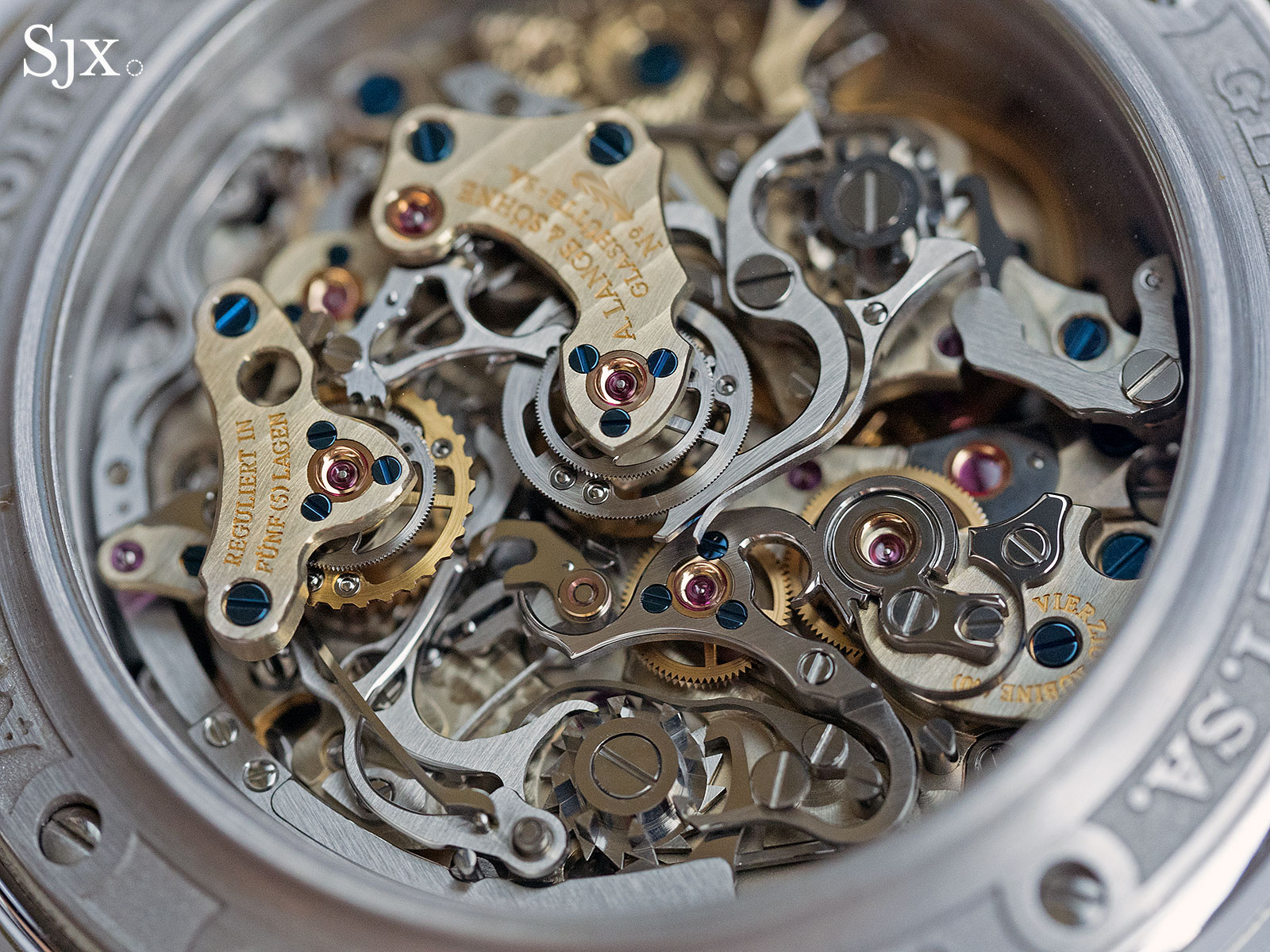
L001.1
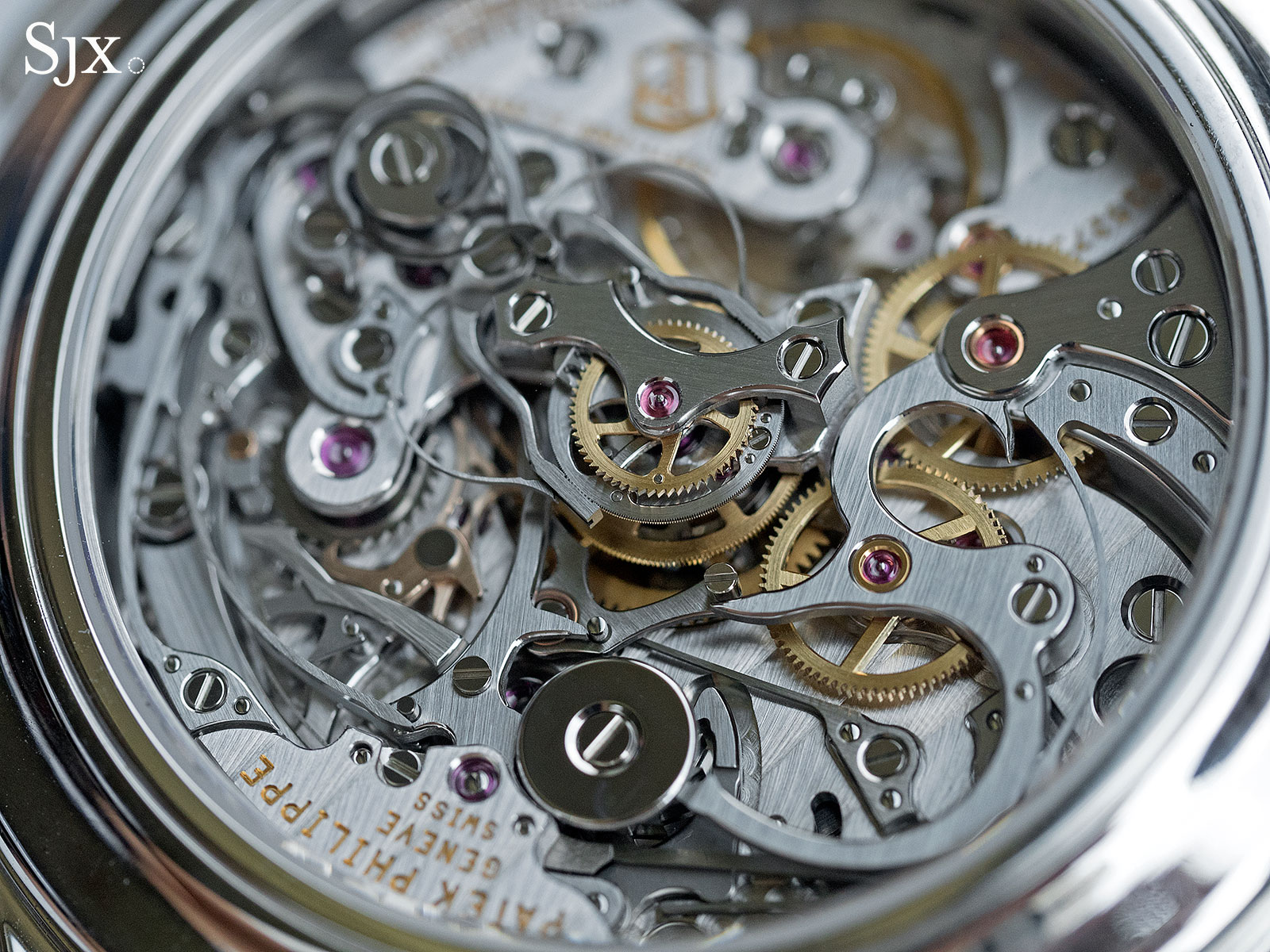
CHR 29-535 PS
Visually, it’s hard to pick faults with either movement. Both calibres have a mechanical complexity and depth that capture the imagination. The photographs below alternate between the Double Split and the 5370P.
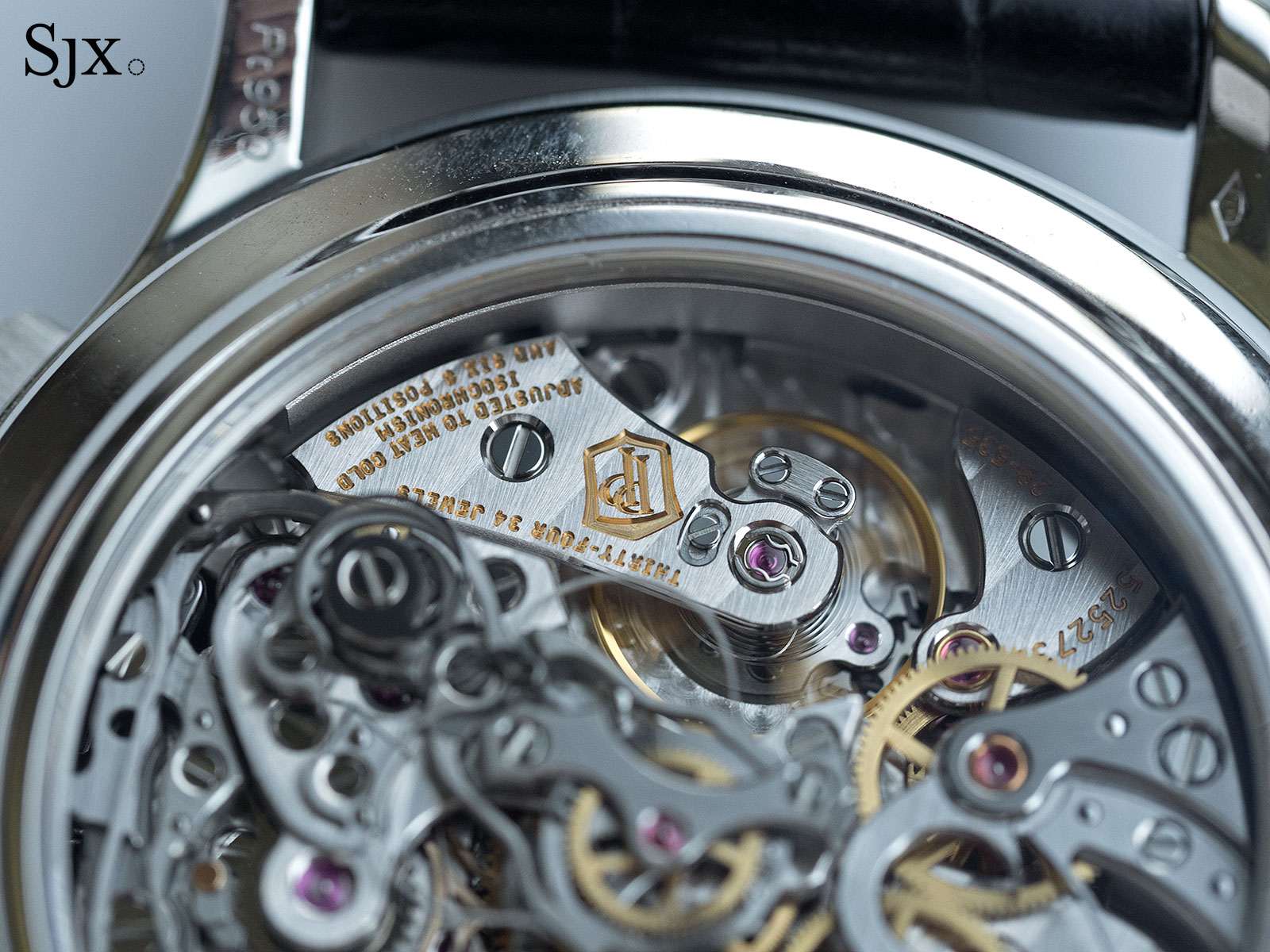
The twin “P” of the Patek Philippe Seal
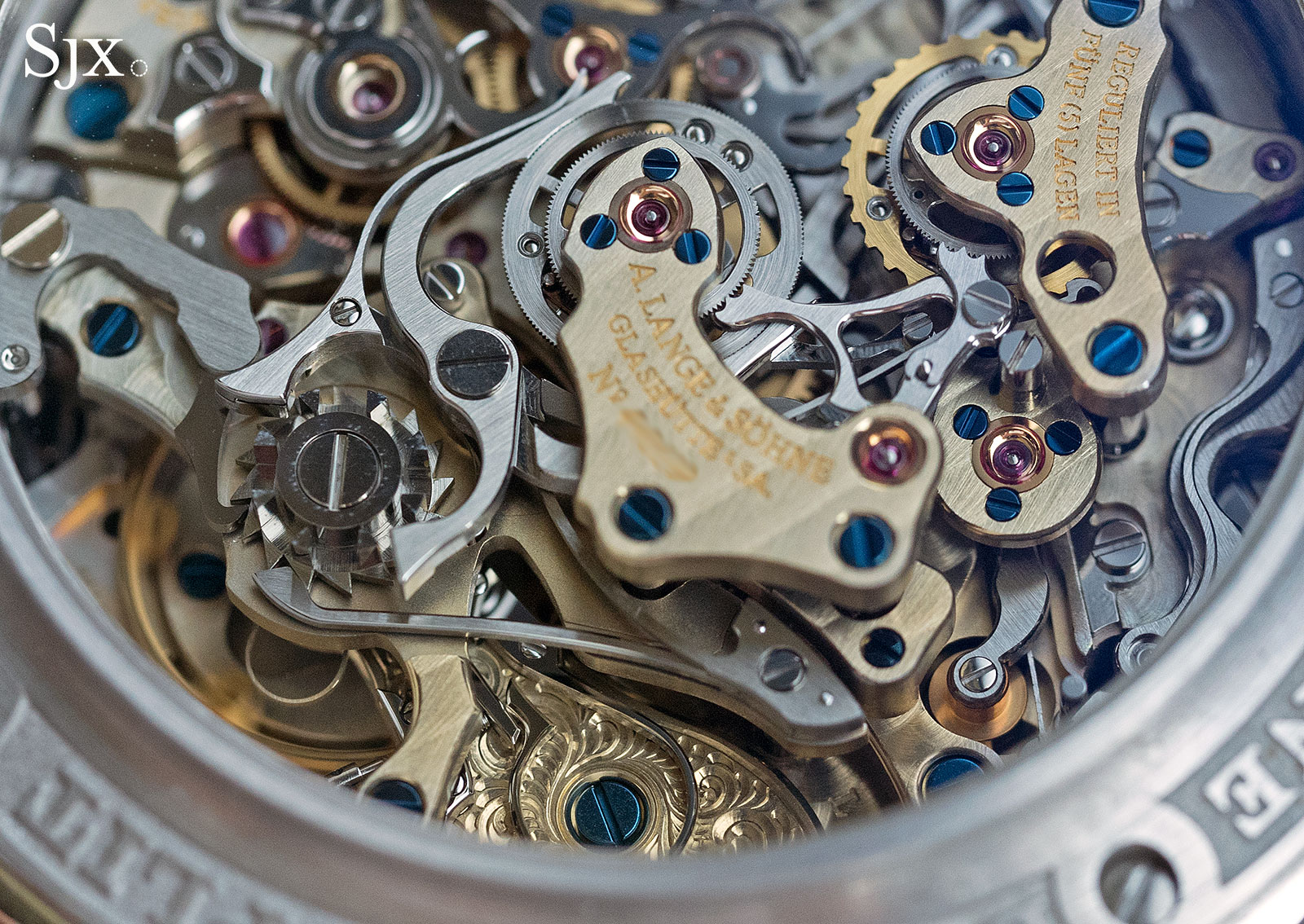
The somewhat massive split-seconds mechanism in the Double Split, with the characteristic pincers of the complication

The decidedly more compact split-seconds in the 5370P

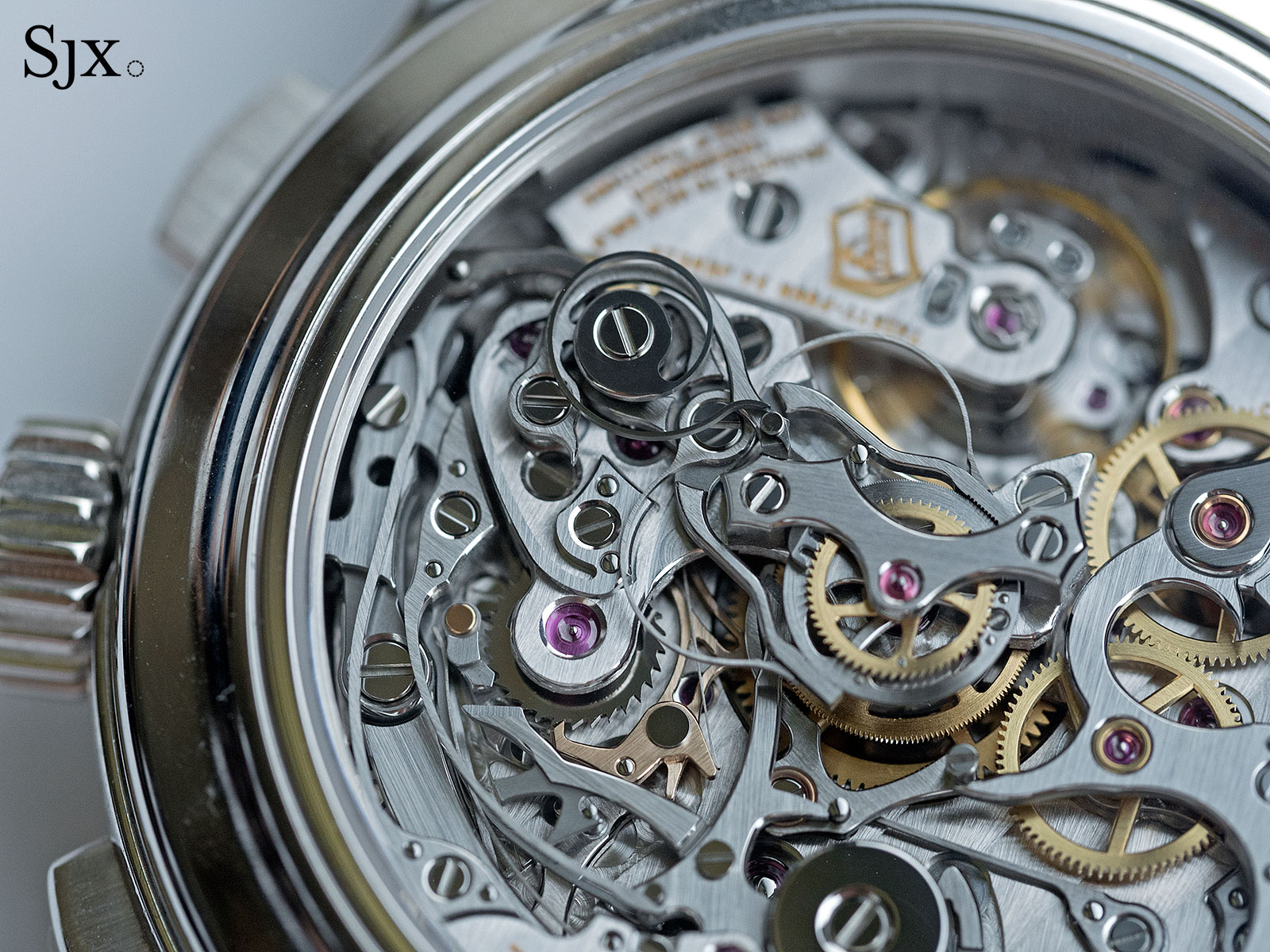
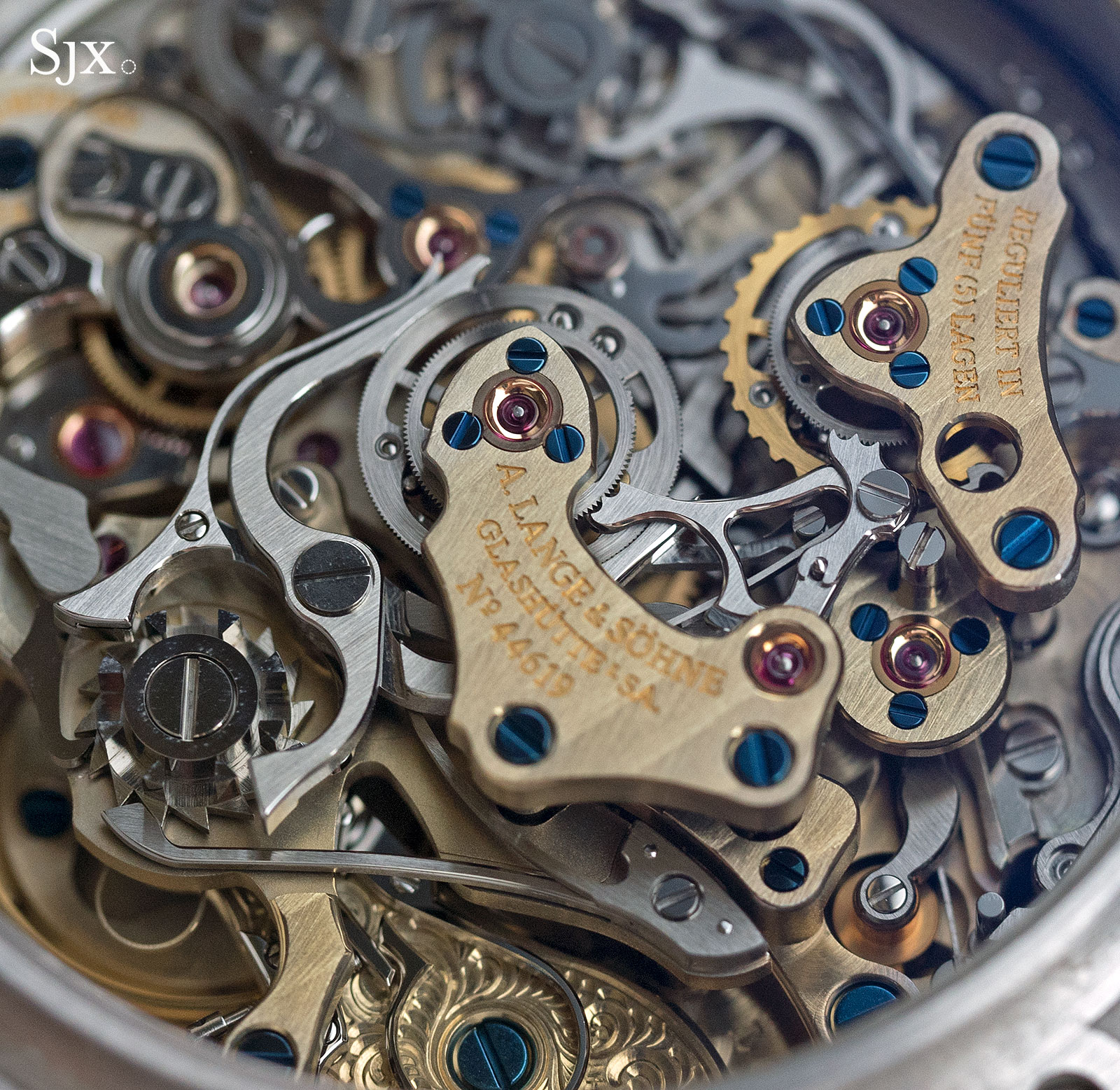
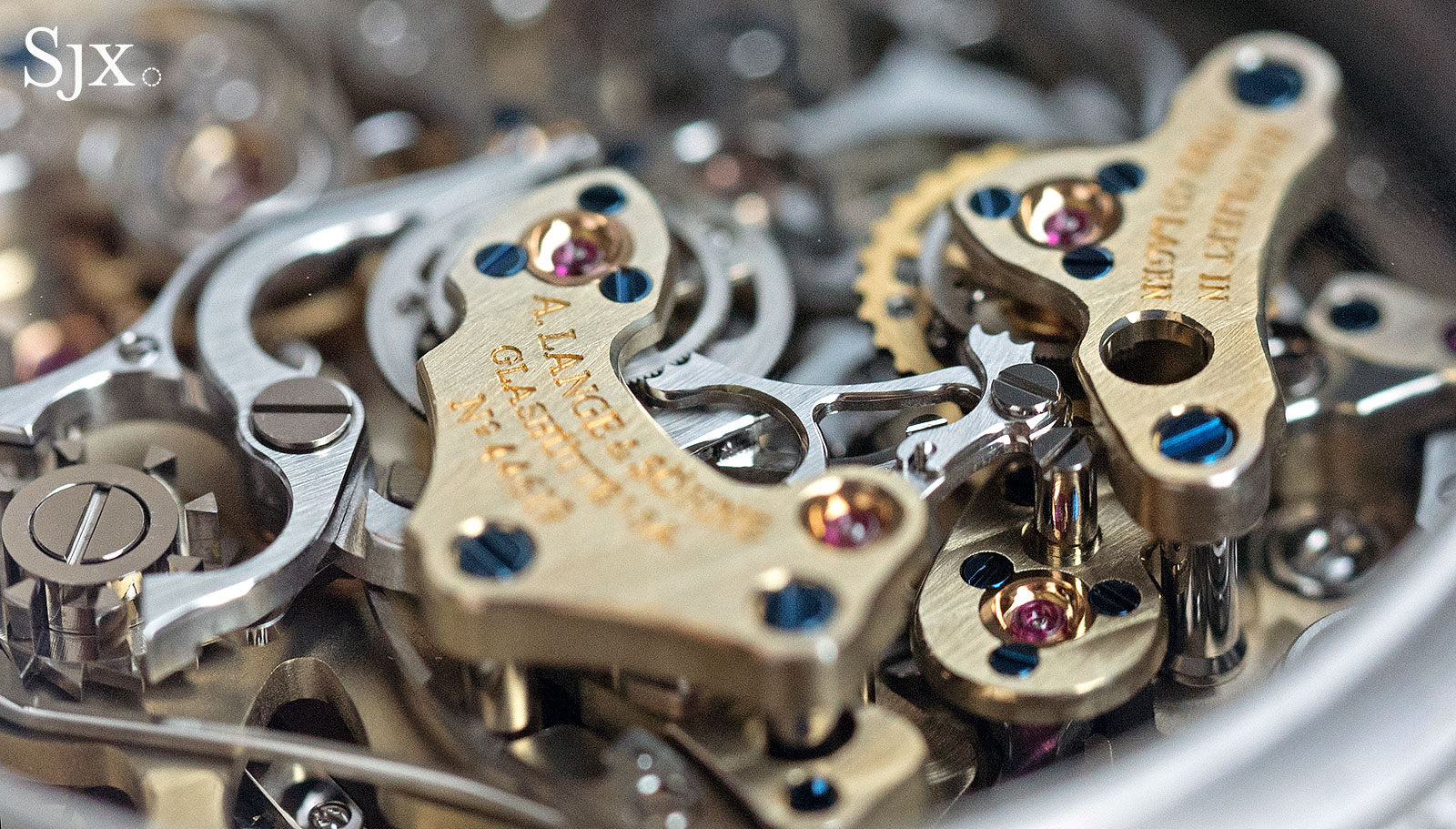
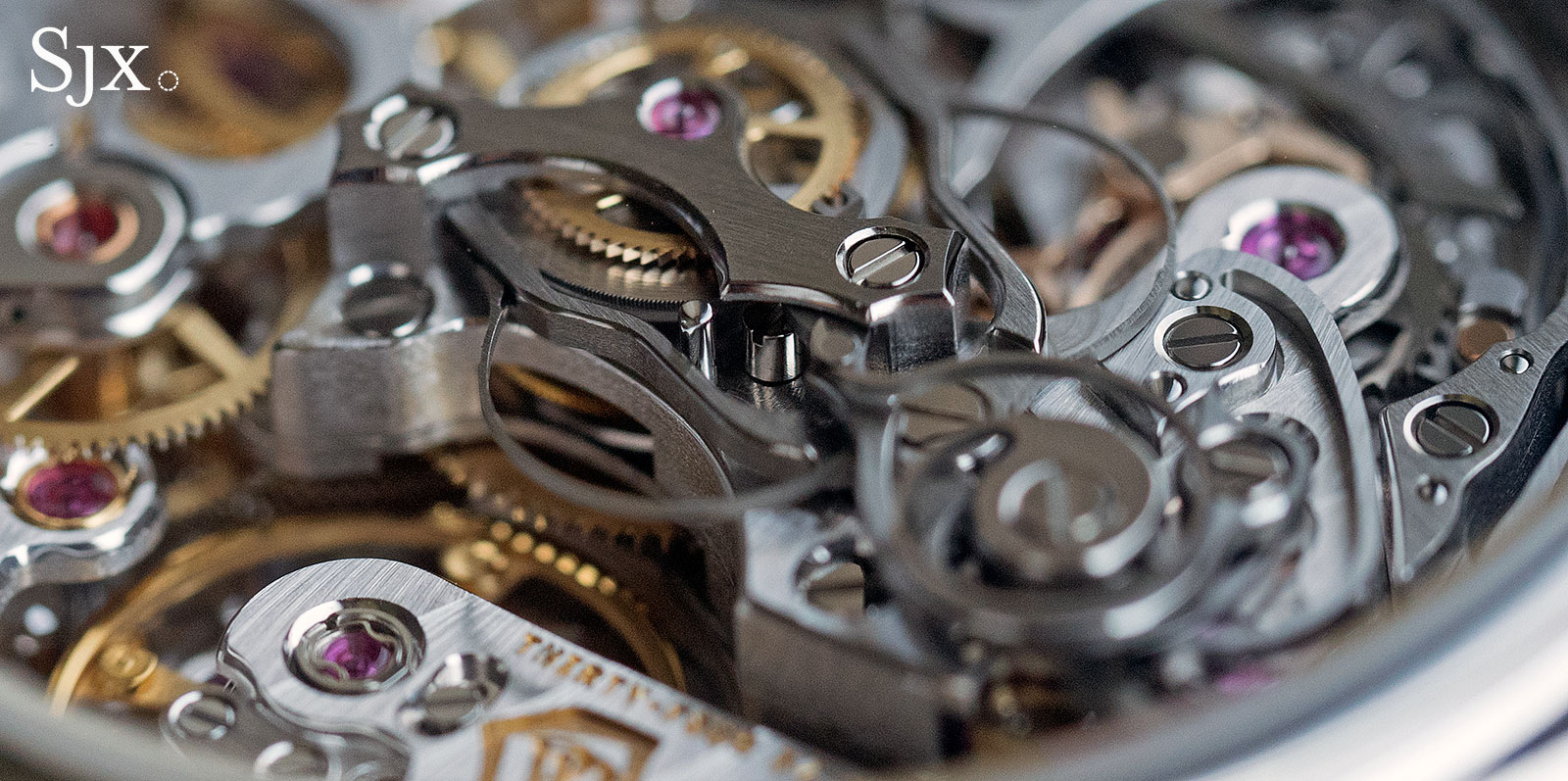
Lavish and intricate in its size, the Double Split movement has more going on. The optics of the movement are staggering.
It’s almost as if there is so much packed inside that the movement’s constructors ran out of space. Take for example the second column wheel, which had to be installed above the balance wheel.
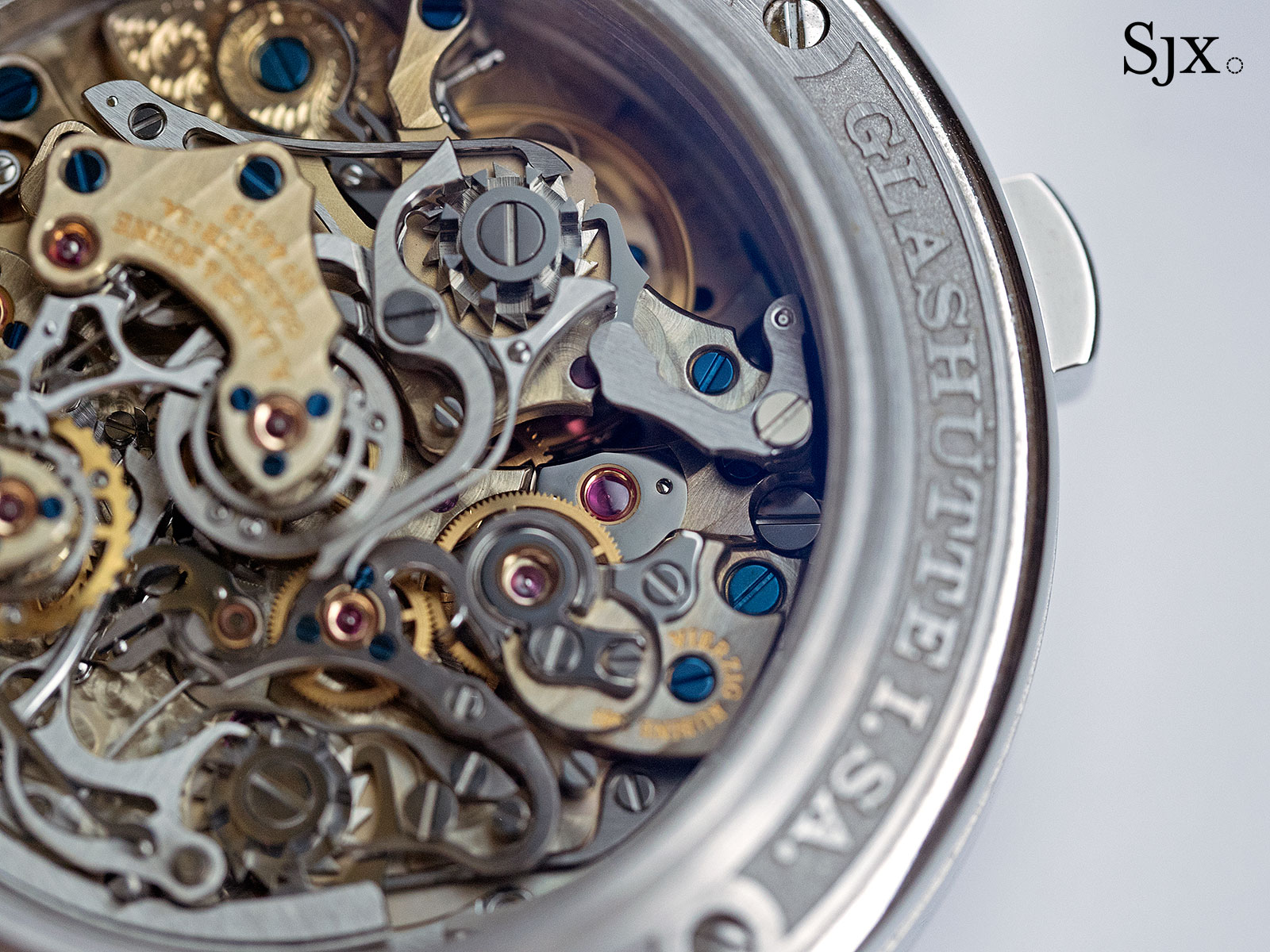
At top-centre, the second column wheel of the Double Split, with the balance wheel right below
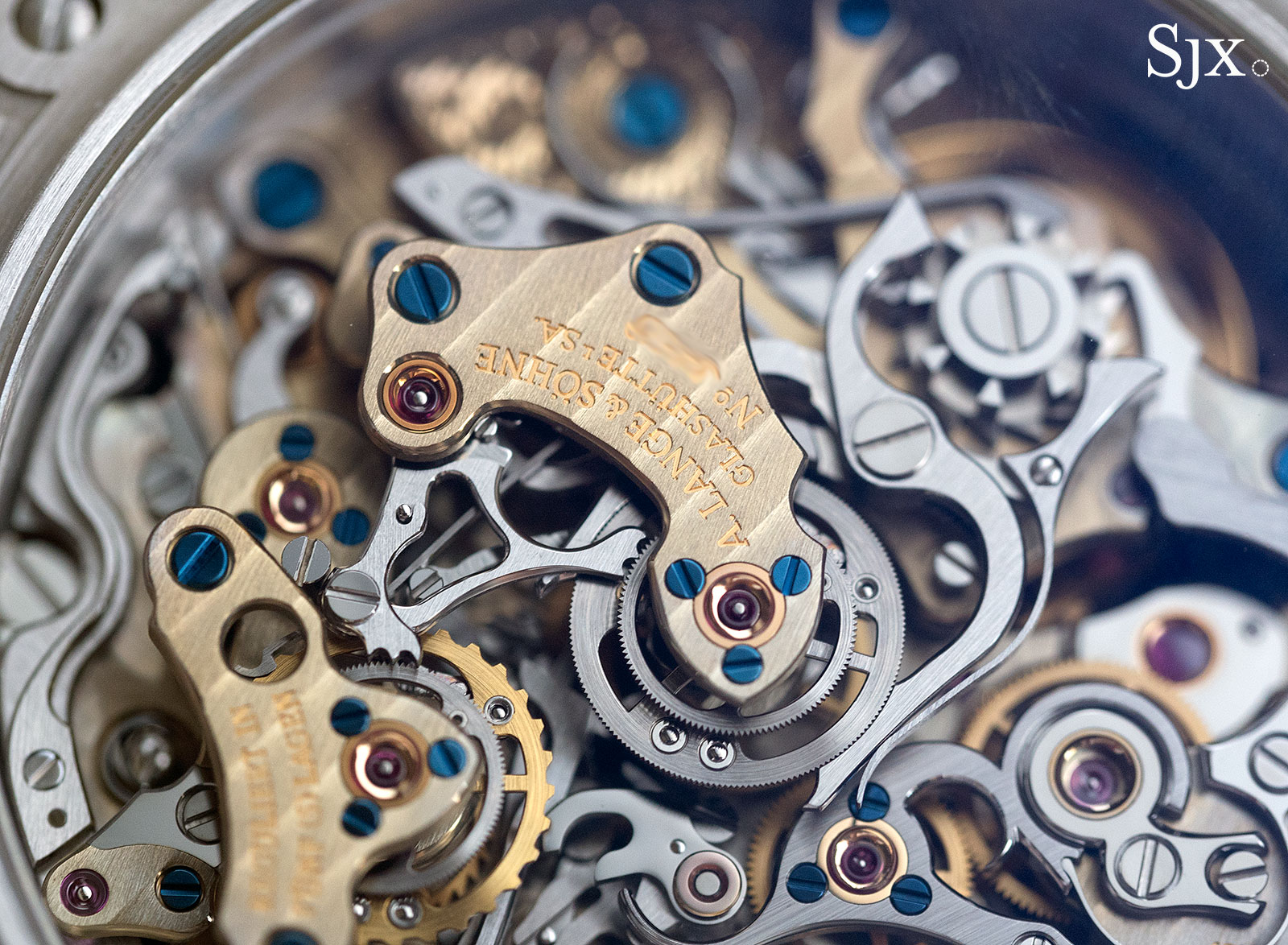
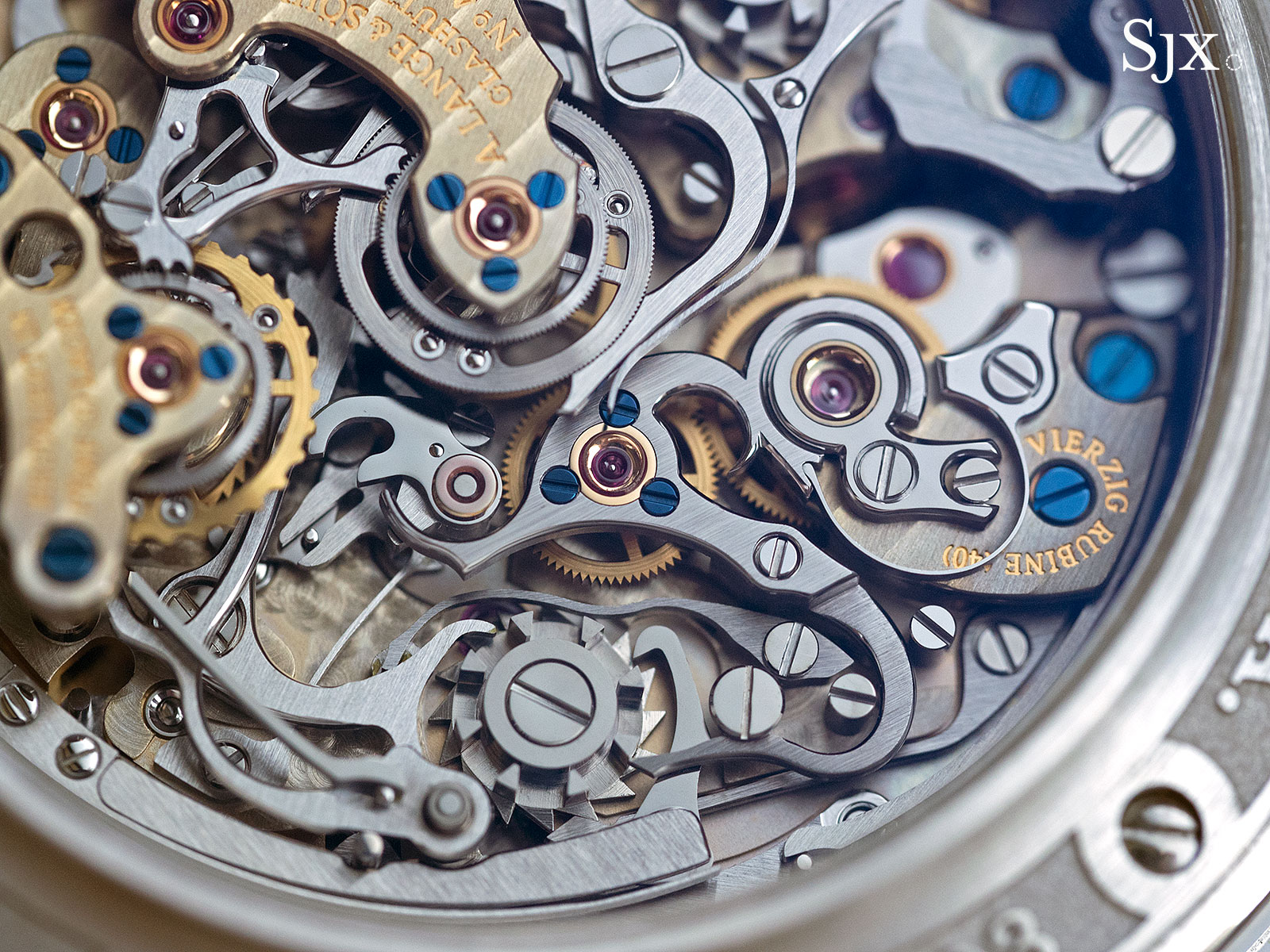
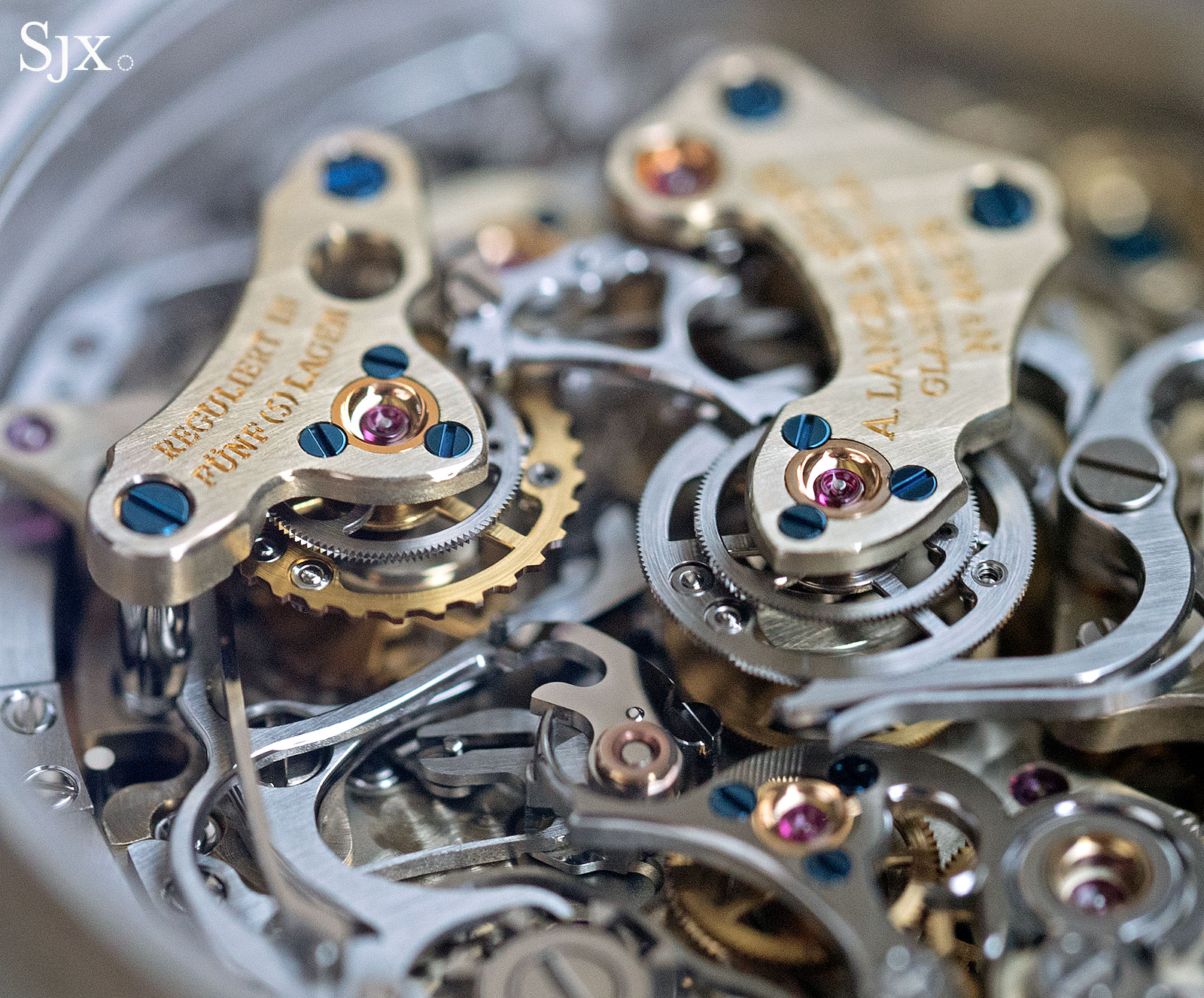
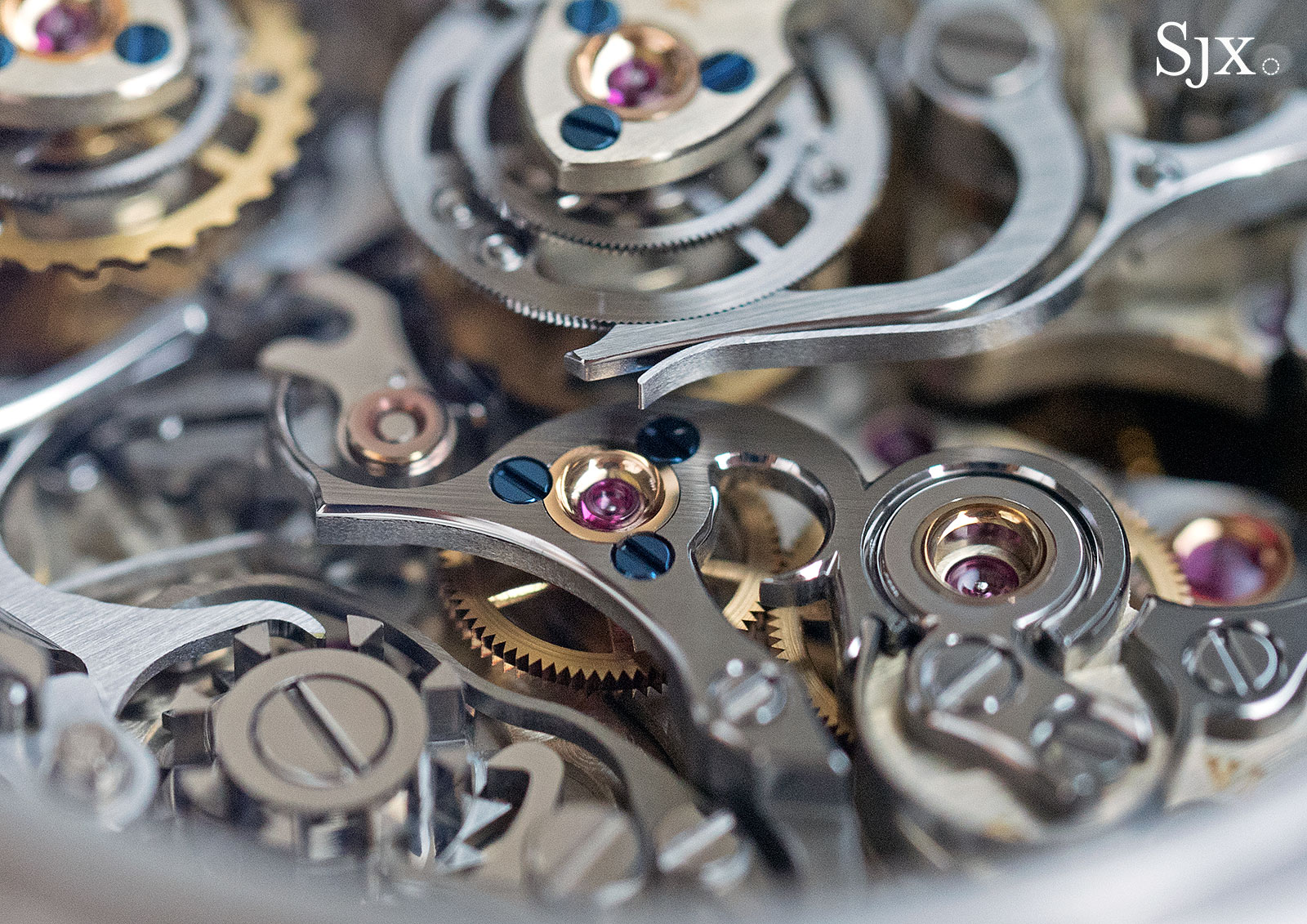
The Lange also takes the lead in terms of the design of the chronograph levers. Following the example set by the Datograph, the chronograph mechanism of the Double Split has in mind aesthetics as much as function. That means the chronograph parts are sculpted into forms that are narrow but thick, giving the movement depth and solidity, with lots of sharp angles and sweeping curves. Contrast this to the Lange 1815 Rattrapante Perpetual Calendar, which instead has wide and flat chronograph levers to reduce the thickness of the movement.
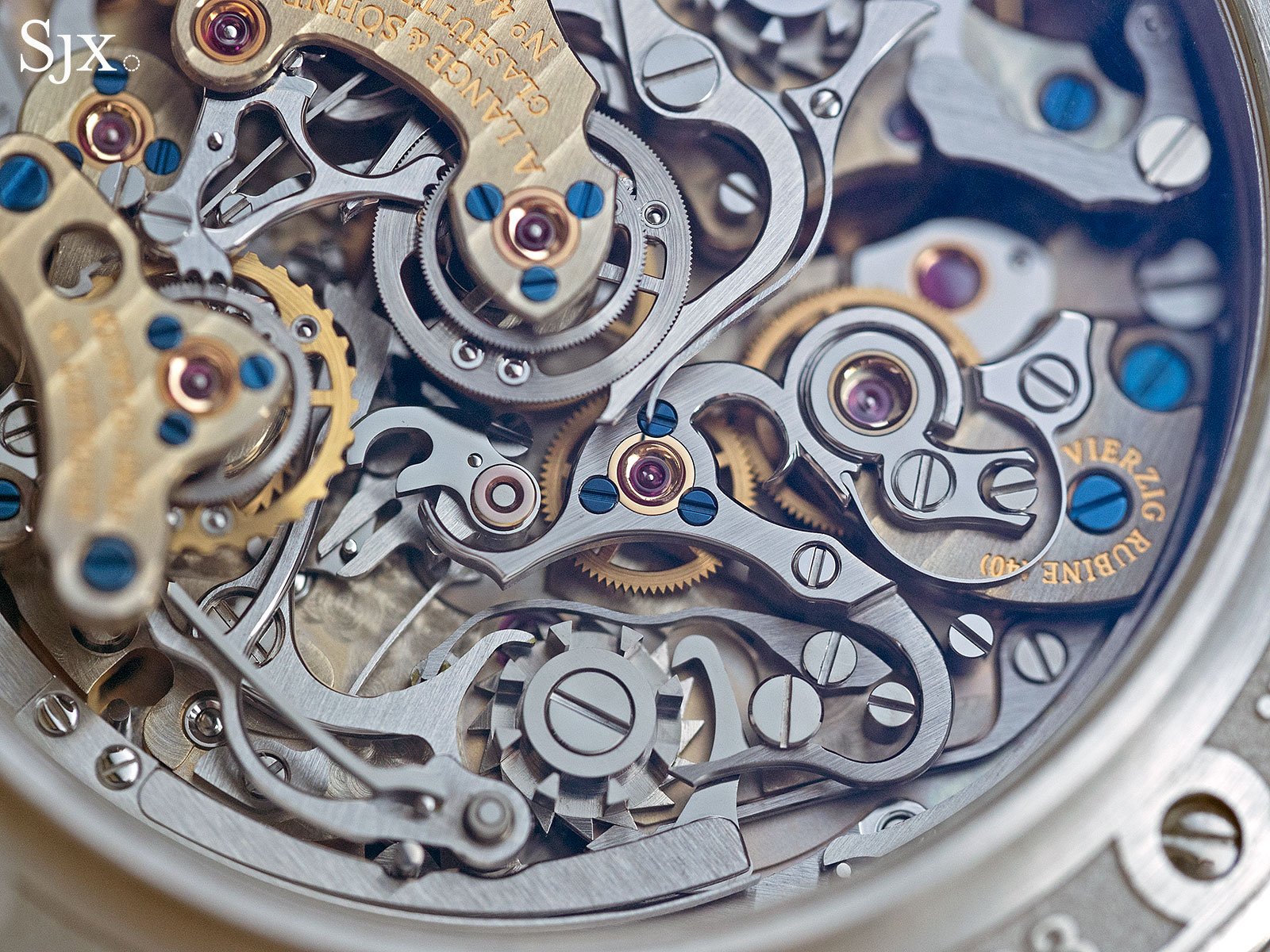
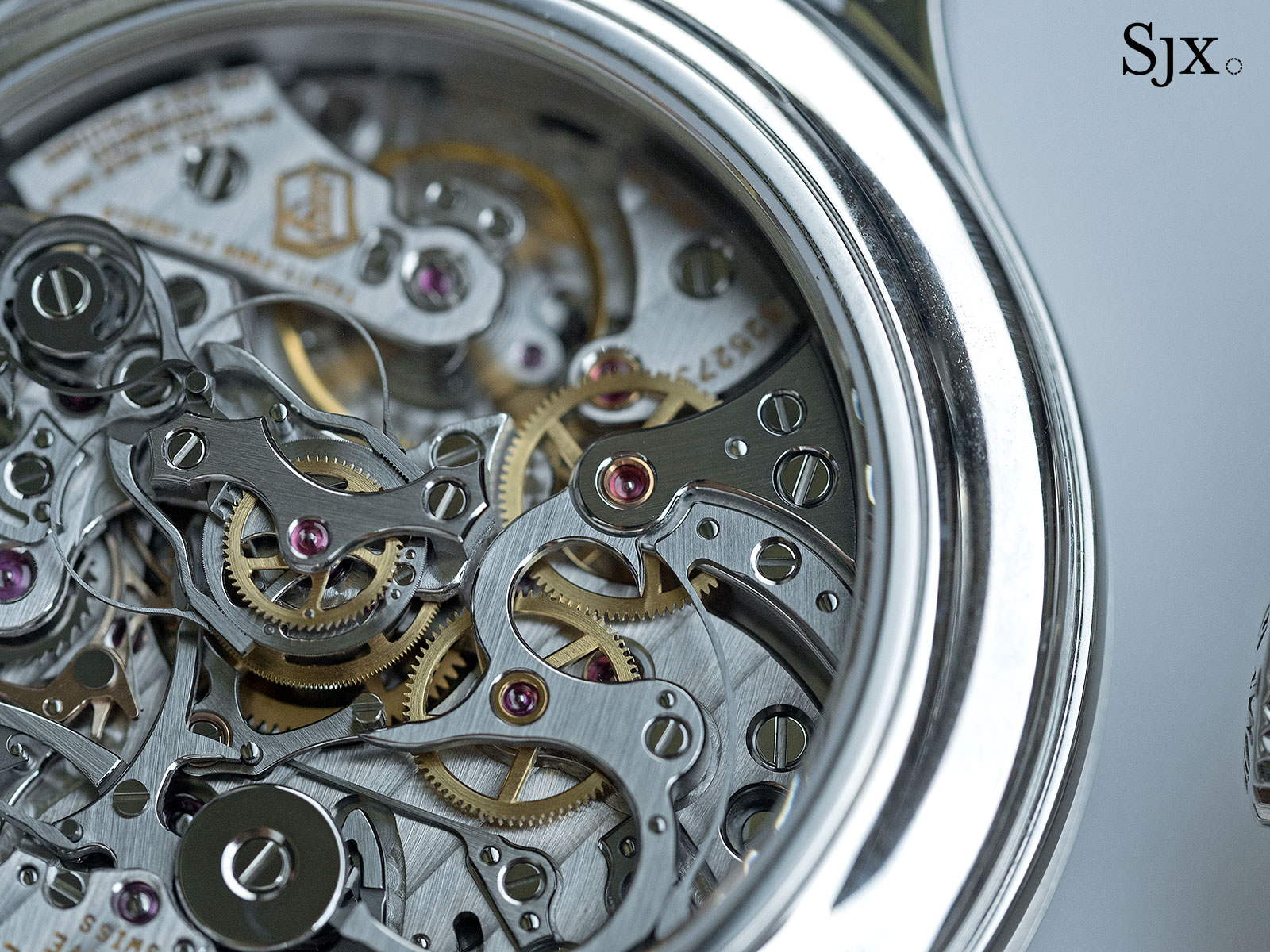
That being said, most of the chronograph components in the Patek Philippe are finer, leaving the entire assembly looking more intricate. Some in fact are exceptionally slim, like the spring levers for the split-seconds. Built upwards and forming a tower in the middle of the movement, the split-seconds mechanism forms the visual highlight of the whole calibre.
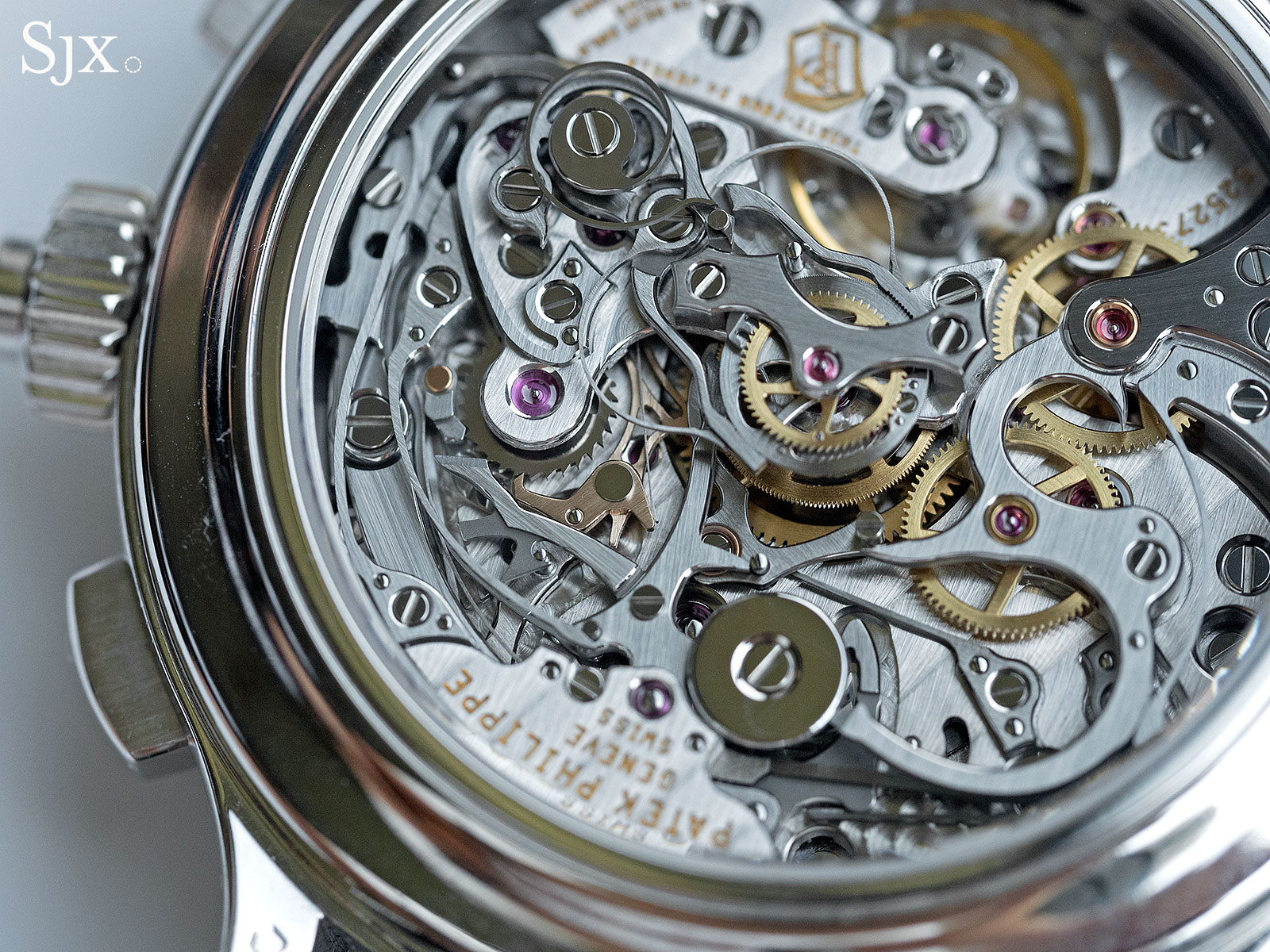
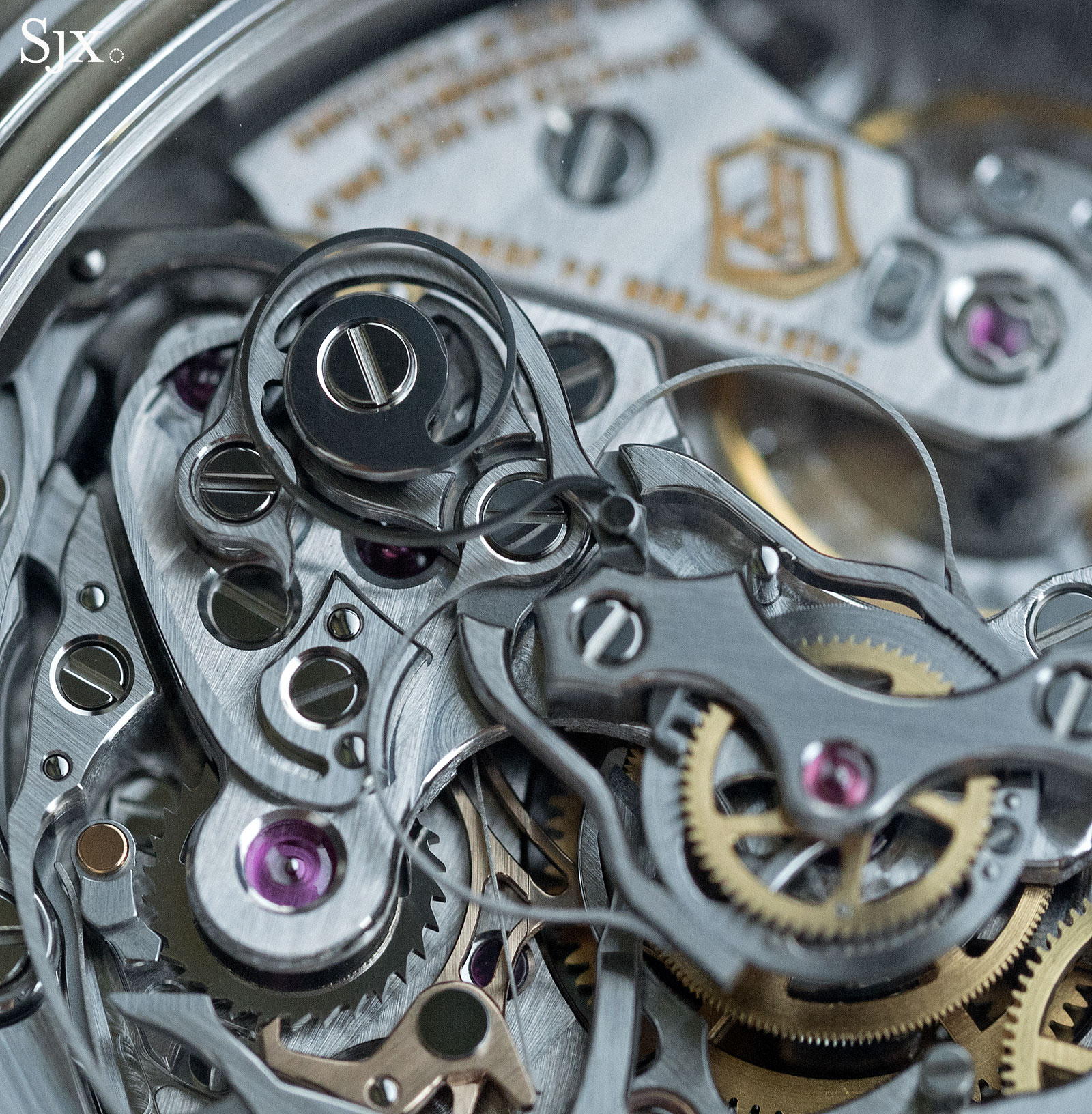
Here are a dozen more gratuitous photographs of the pair to compare.
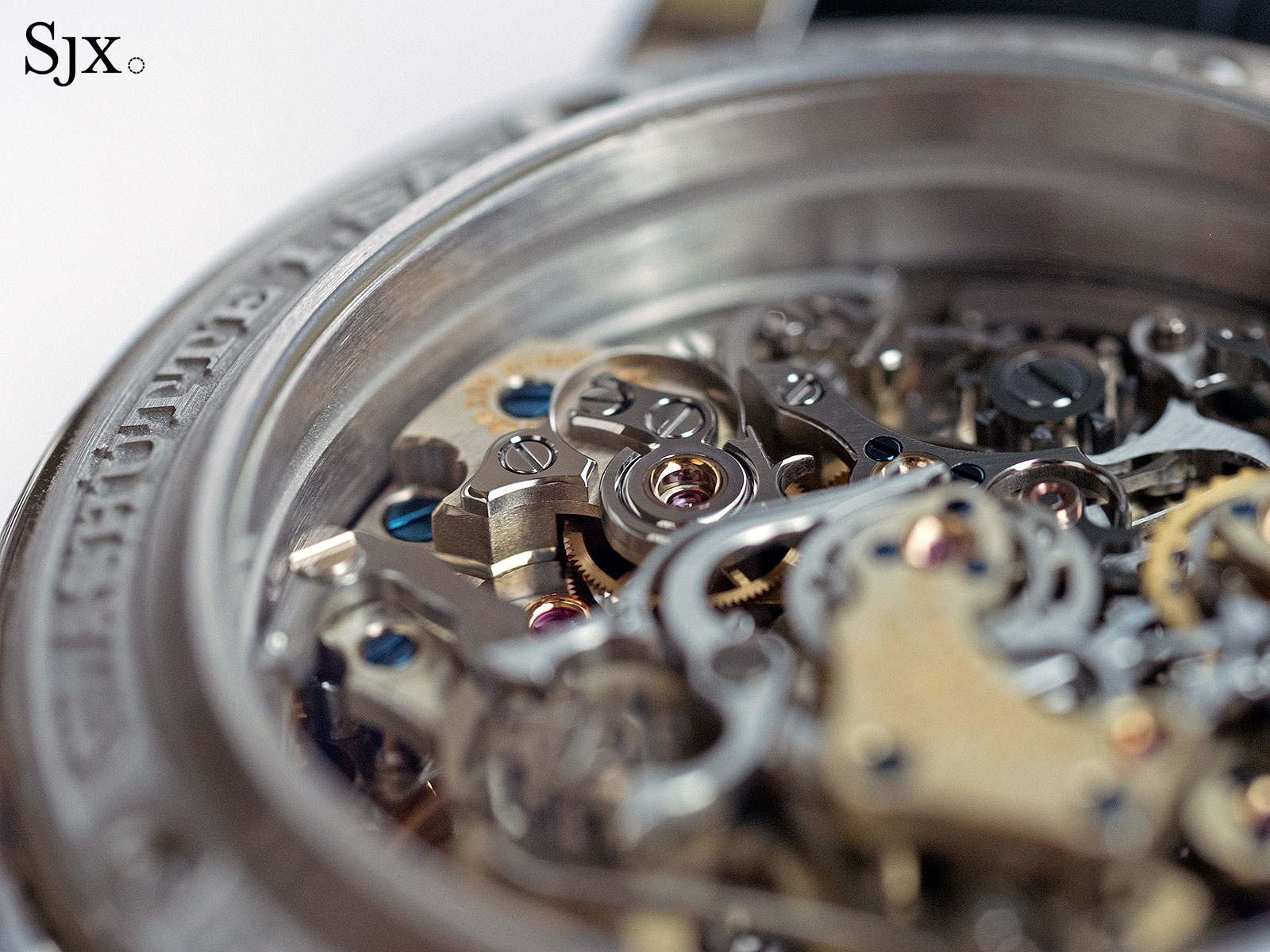
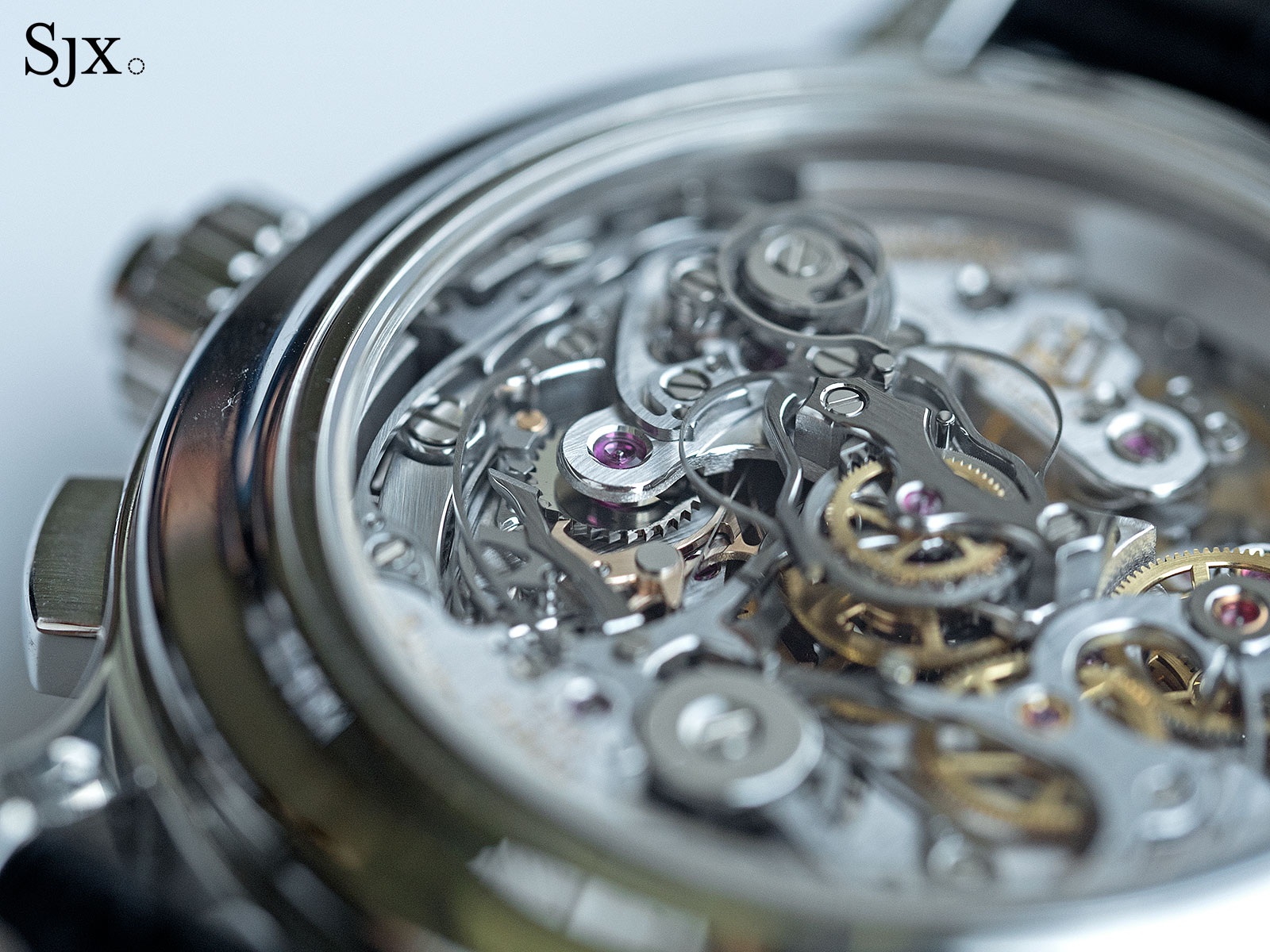
Conclusion
The Double Split and 5370P have differing merits, but put simply, the Patek Philippe is more wearable, while the movement in the Lange is truly arresting.
In its current rose gold incarnation the Double Split retails for US$128,400, and the last retail price of the platinum version in 2011 was US$126,800.
On the other hand, the ref. 5370P retails for SFr220,000 or US$249,200 – almost twice as much. In bang for the buck, the Lange wins.
Other contenders
There are two other obvious candidates in this race: the Vacheron Constantin Harmony Ultra-Thin Grande Complication Chronograph and the Patek Philippe ref. 5950, powered by the calibre CHR 27.
Unlike all the others, the Vacheron Constantin is automatic, wound via a clever peripheral rotor that doesn’t obscure any of the chronograph mechanism. The visuals of the movement are intricate and complex – the view from the back is stunning – comfortably elevating it to the top tier in terms of aesthetics.
The calibre 3500 a large and flat movement – at 5.2mm high it’s the thinnest split-seconds calibre on the market – with the chronograph parts spread out over a wide space, so it doesn’t have the density of the Double Split or 5370P. And it costs US$369,200, which is a tad much.

Introduced as a mere 10-piece limited edition for Vacheron Constantin’s 260th anniversary last year, there is no word on whether the calibre 3500 inside will return in another watch, though odds are it will.

And ditto for the Patek Philippe ref. 5950, which in its various versions costs about US$450,000 or more. The movement inside is amazingly thin and compact, just 5.25mm high and just over 27mm in diameter.
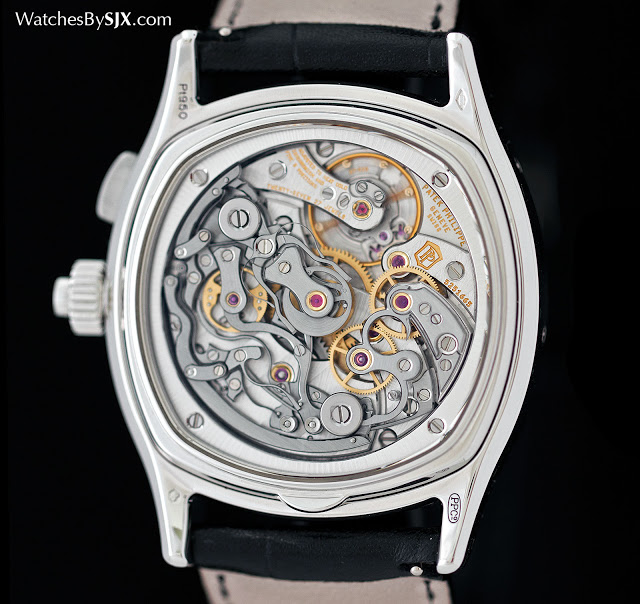
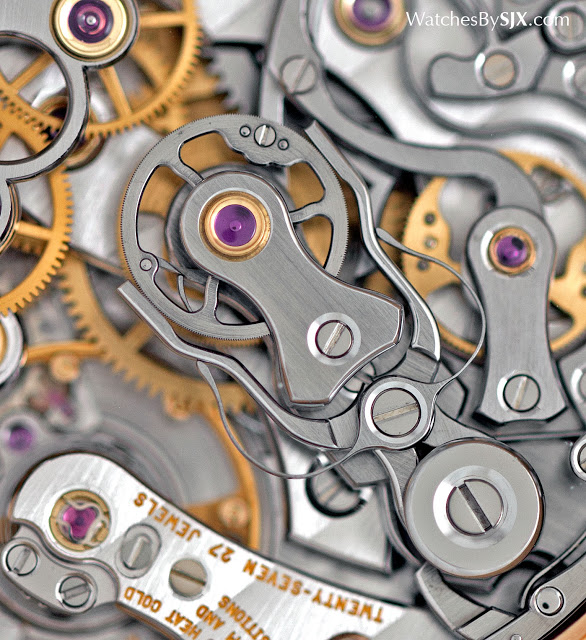
The chronograph mechanism is incredibly finely made, exemplified by the the springs for the callipers of split-seconds that are the thinnest of all the watches featured here. But the price is hard to reconcile.
Back to top.

